The Best Trail-Running Shoes
It’s all about grip and protection out on the trails. Use our tried-and-tested recommendations to find the best trail-running shoe for you
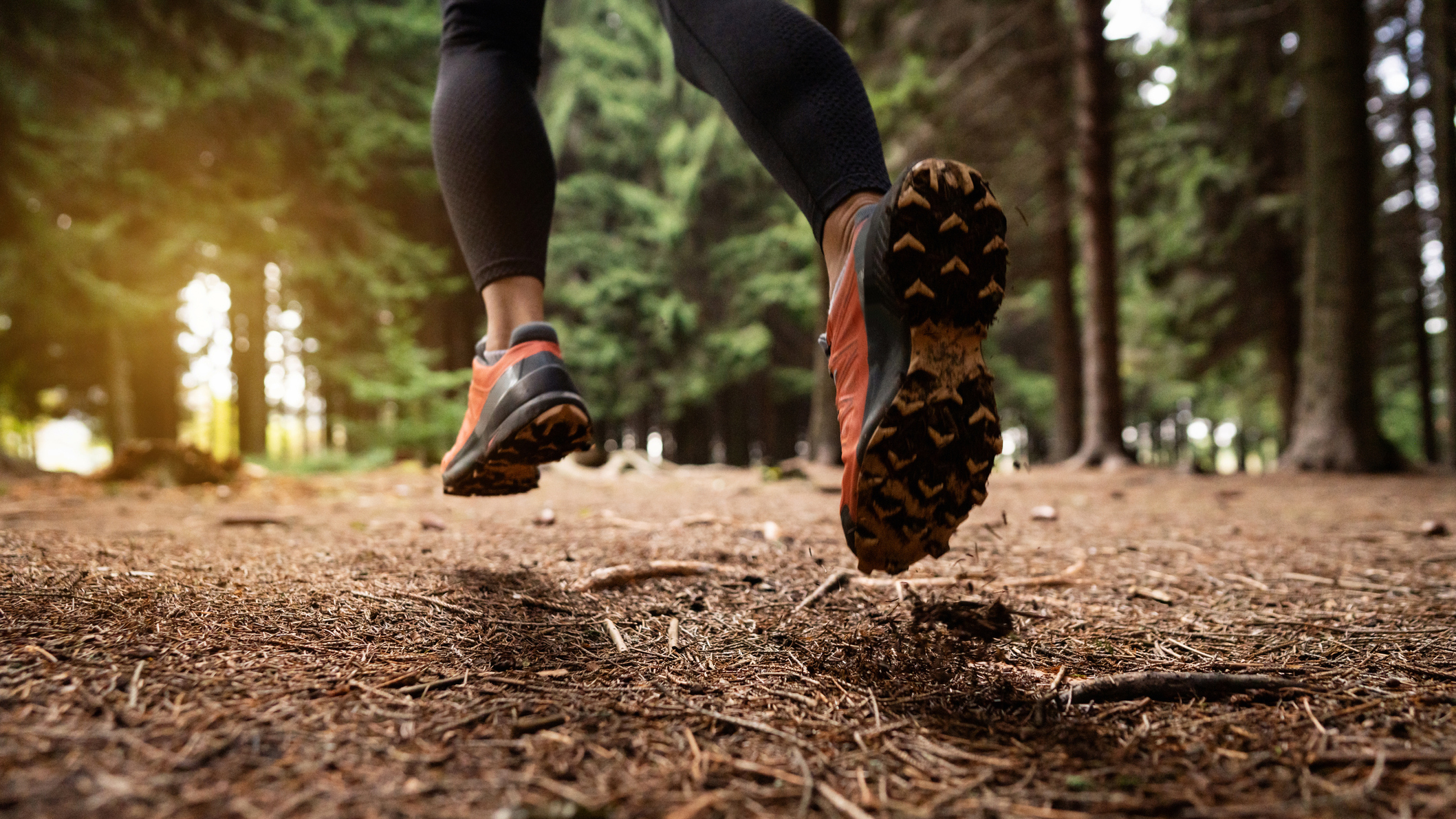
1. The Quick List ↴
2. Best all-rounder: Saucony Xodus Ultra 2
3. Best waterproof shoe: Arc’teryx Norvan LD 3 GTX
4. Best for the mud: Inov-8 Mudtalon Speed
5. Best for road-to-trail: Inov-8 Parkclaw G 280
6. Best value: Evadict MT Cushion 2
7. Best for racing: Adidas Terrex Agravic Speed Ultra
8. Best for ultra-marathons: Hoka Speedgoat 5
9. Buying advice
Trail running is an appealing proposition for most runners, especially those who have to dodge hordes of people on polluted city streets.
It’s a chance to get away from it all, forget about your split times and enjoy being surrounded by nature. Taking to the trails opens up a different side of running compared with pounding city pavements.
However, to really enjoy these runs, you need the right kind of footwear. All the fun of trail running disappears when you’re slipping on mud or you turn your ankle several miles from your car.
Below are great options to suit every kind of trail runner, and advice on things to think about to make sure you get the right shoes for you. If you’re an old hand looking for new kicks, use the quick links to jump straight into my recommendations of the best trail-running shoes.
How I Test
You can trust Coach

I am Coach’s main trail-running shoe tester and write almost all the running shoe reviews on the site. I run 70-110km a week and have PRs of 15min 30sec for 5K and 2hr 28min for the marathon.
Although I primarily target road events, I do a lot of trail running during my training. For the most part I run on well-kept but muddy forest trails, but I also spend many winter weekends plowing through mud for cross-country events. Trips to see family in Scotland and the Forest of Bowland occasionally allow for more intense trail shoe testing on fells and (small) mountains, but living in the south of England it’s hard to recreate the mountain tracks some trail shoes are designed for.
While all the shoes in this round-up have been tested extensively, some don’t have my own photos or a standalone review. Coach now publishes full reviews of trail-running shoes, so in time all our featured recommendations will have more detail about my experience with them. I aim to run at least 50km in each shoe I review, and test trail-running shoes on a range of terrains on runs of varied lengths to see how the grip holds up and how comfortable the shoe is.
The Quick List
In the full list below you’ll find multiple recommendations for different terrains and types of trail-running, but first here are my top picks in various categories. Click through to get more details on each shoe.
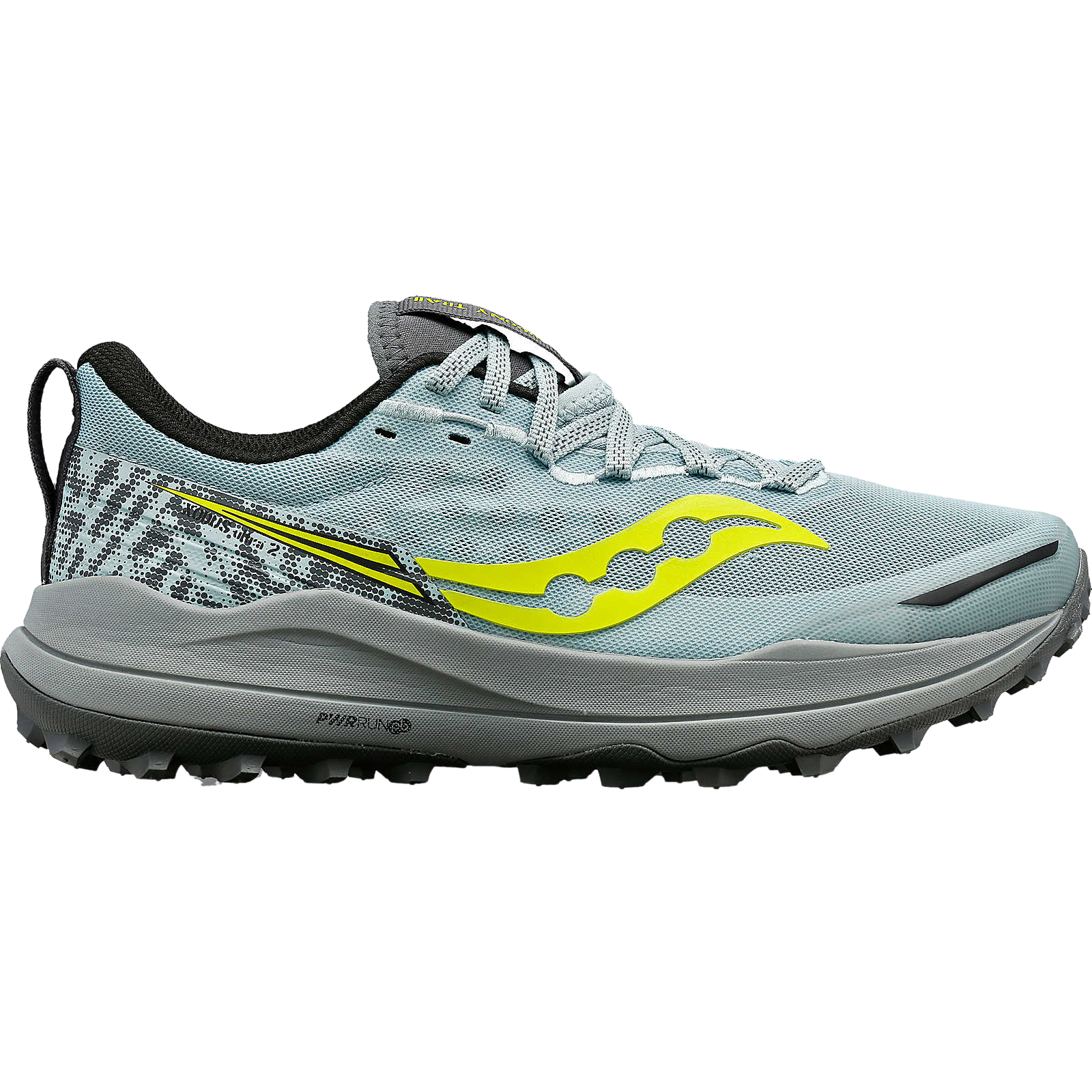
Best all-rounder
The Xodus Ultra 2 is a comfortable, stable shoe that grips well on almost any terrain, and can be used for runs of pretty much any length and speed. It’s a brilliant all-rounder and an easy pick if you want one trail shoe for everything.
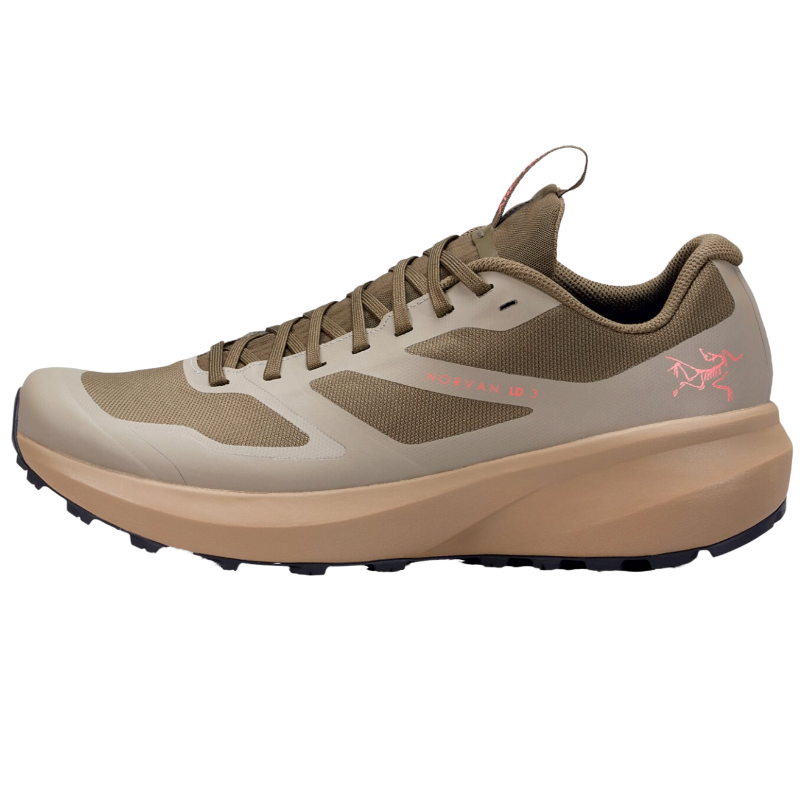
Best waterproof trail shoe
The Arc’teryx Norvan LD 3 GTX is expensive, but delivers a comfortable ride over any distance and has an outsole that grips well on a variety of terrain. The GTX version has a waterproof upper to keep your feet warm and dry.
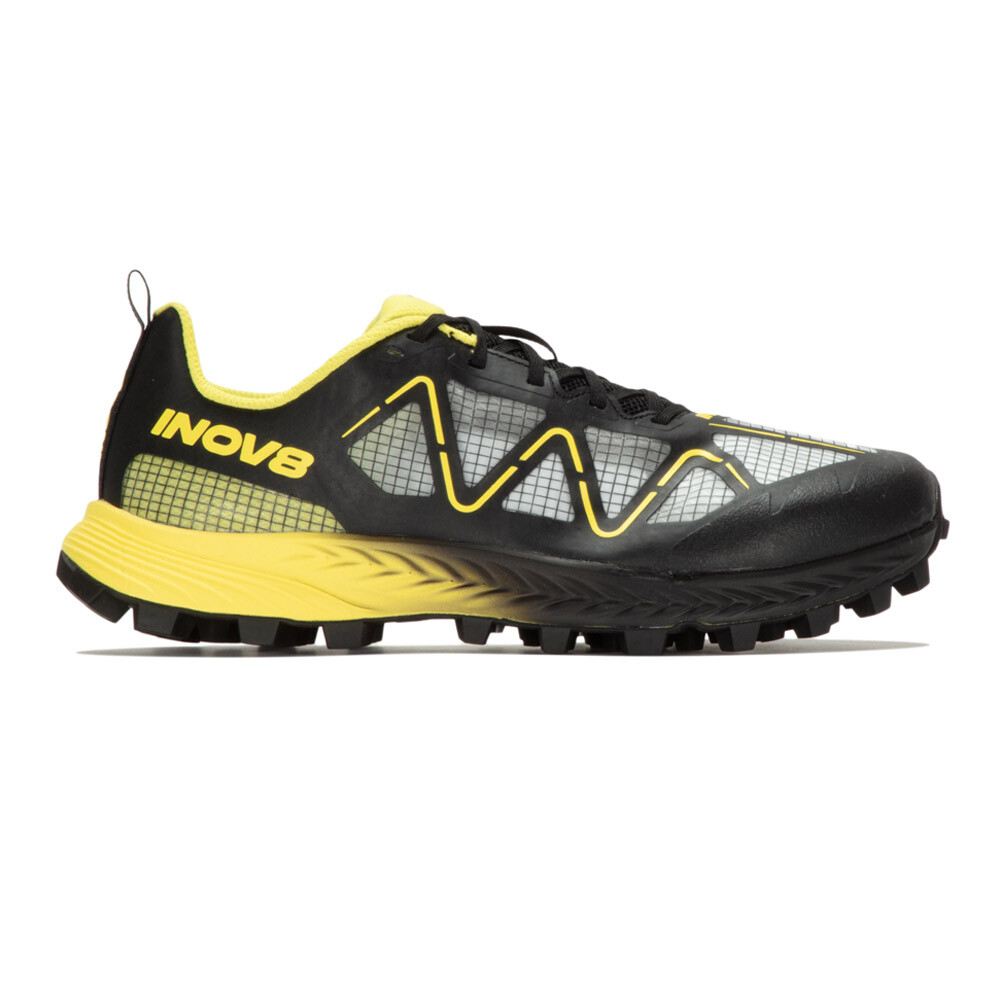
Best for the mud
The Inov-8 Mudtalon Speed has 8mm lugs on its outsole that finds grip even in the deepest mud, and then sheds that mud quickly so you can power on without extra weight on your shoe. It’s a great racing option for soft ground, and comfortable enough for longer runs.
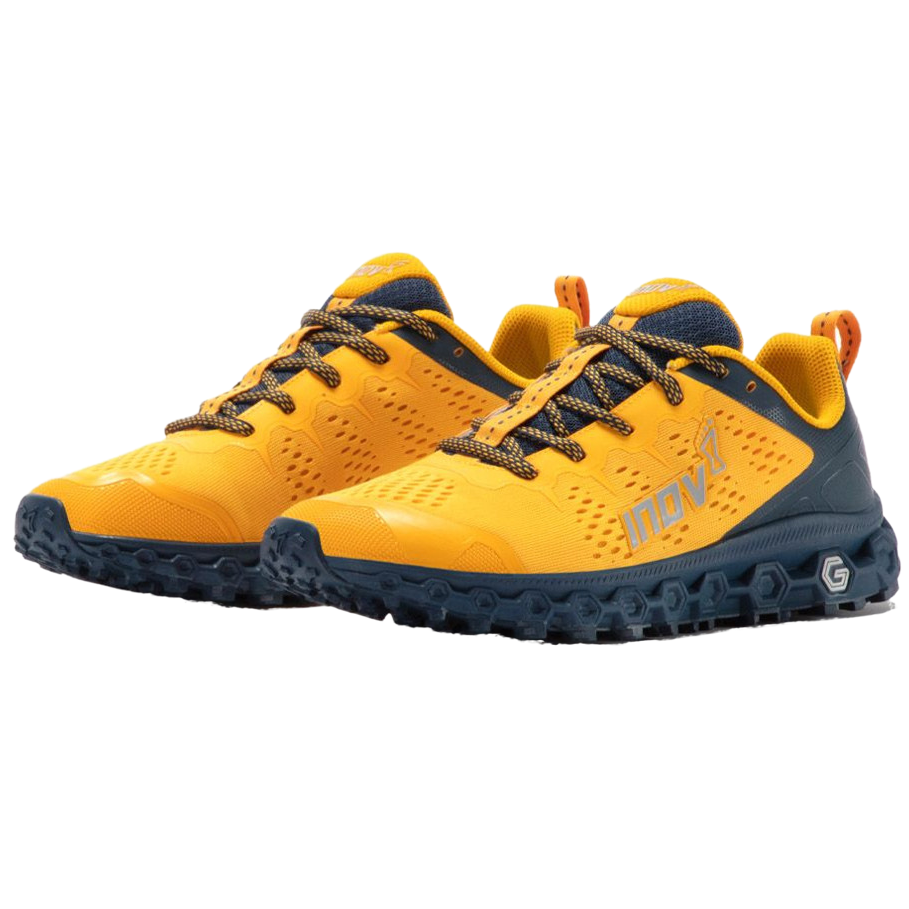
Best road-to-trail shoe
The Parkclaw G 280 has a comfortable, cushioned ride when you’re on roads, but then grips well and is stable when you hit the trails. While it isn’t ideal for deep mud or tricky, rocky trails, it can handle a variety of off-road terrain well.
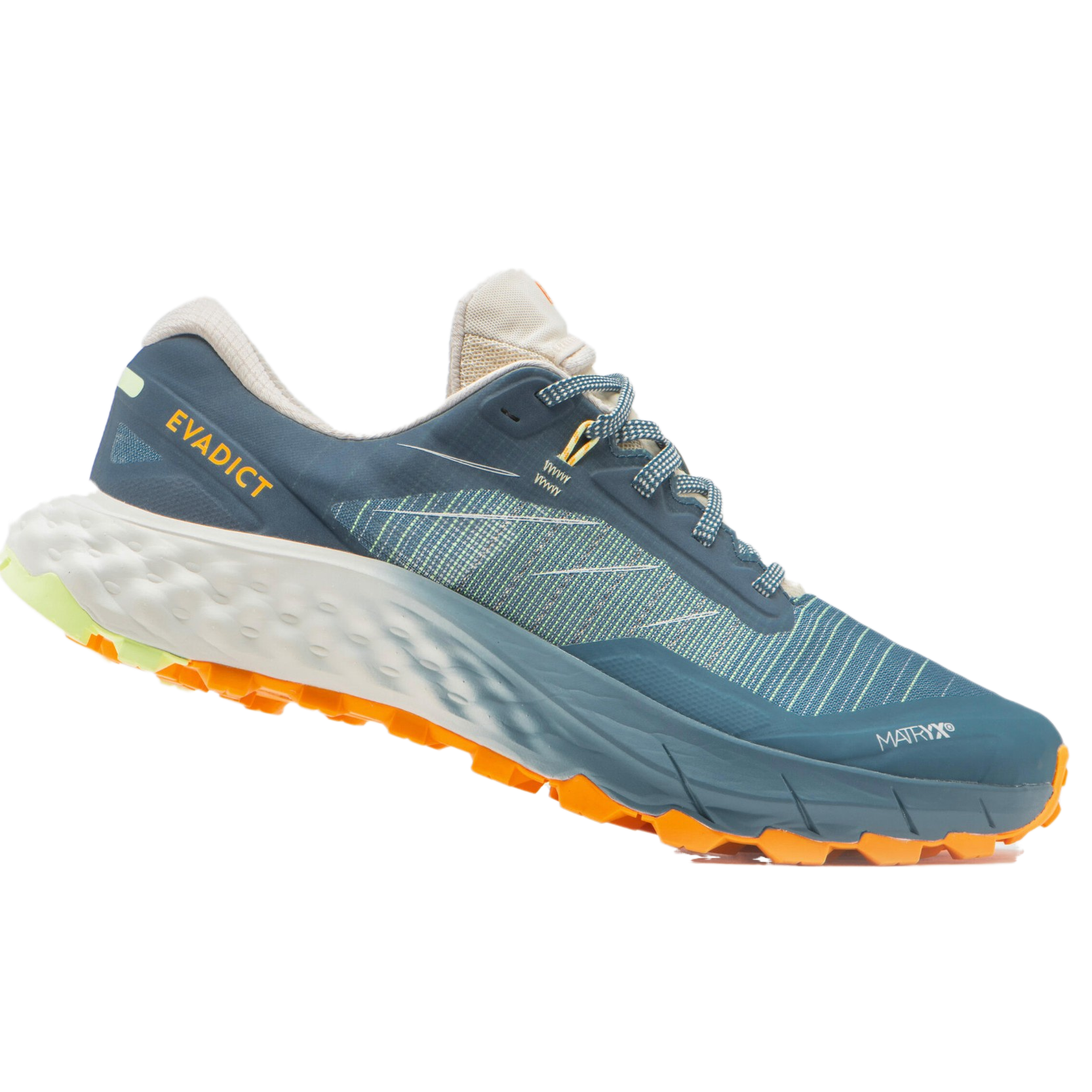
Best value
Decathlon’s top trail-running shoe is a versatile option that grips well on soft and hard terrain and can handle a mix of paces and distances, even going up to ultra-marathon-length events.
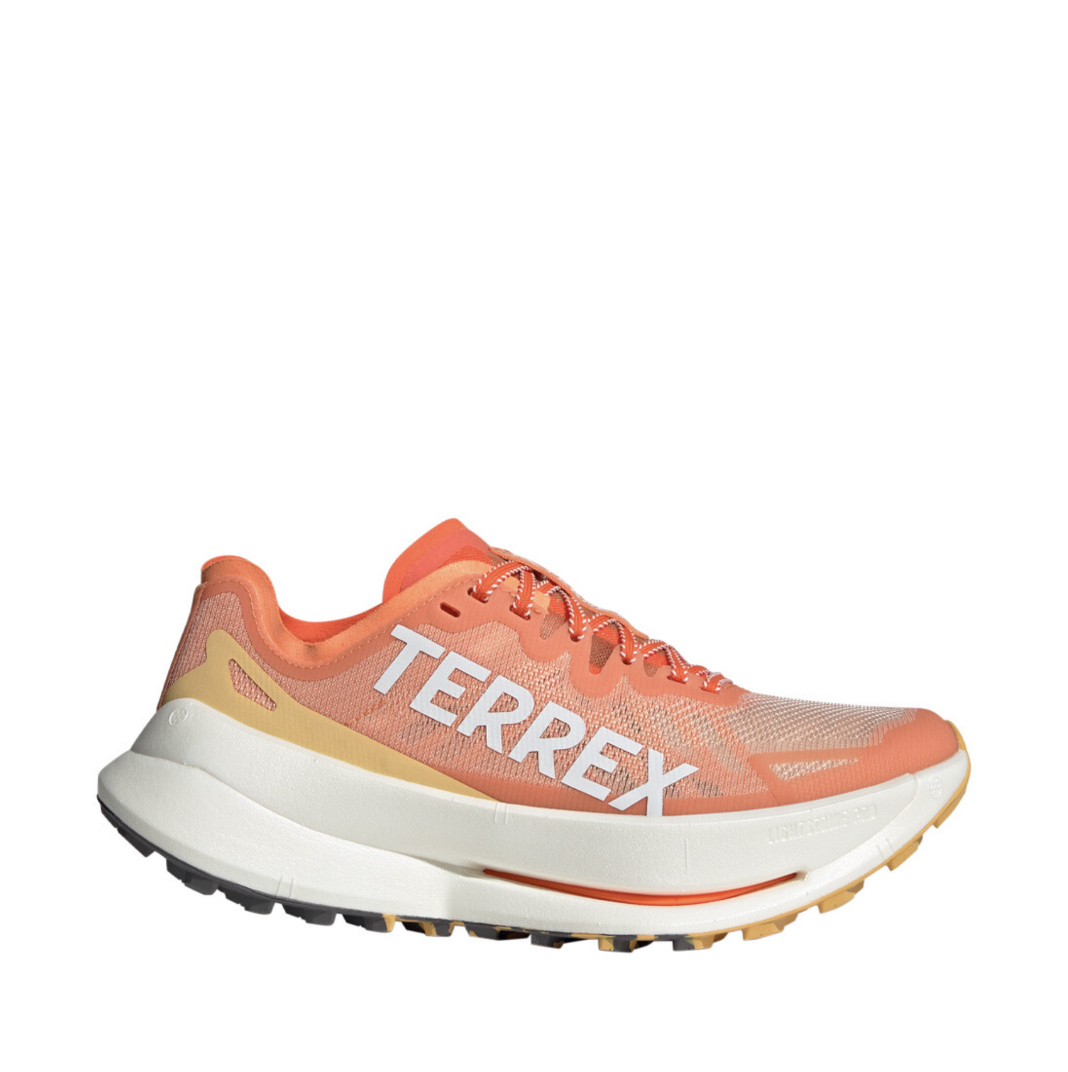
The Adidas Terrex Agravic Speed Ultra brings some of the magic of road super-shoes to the trails
More picks ↴
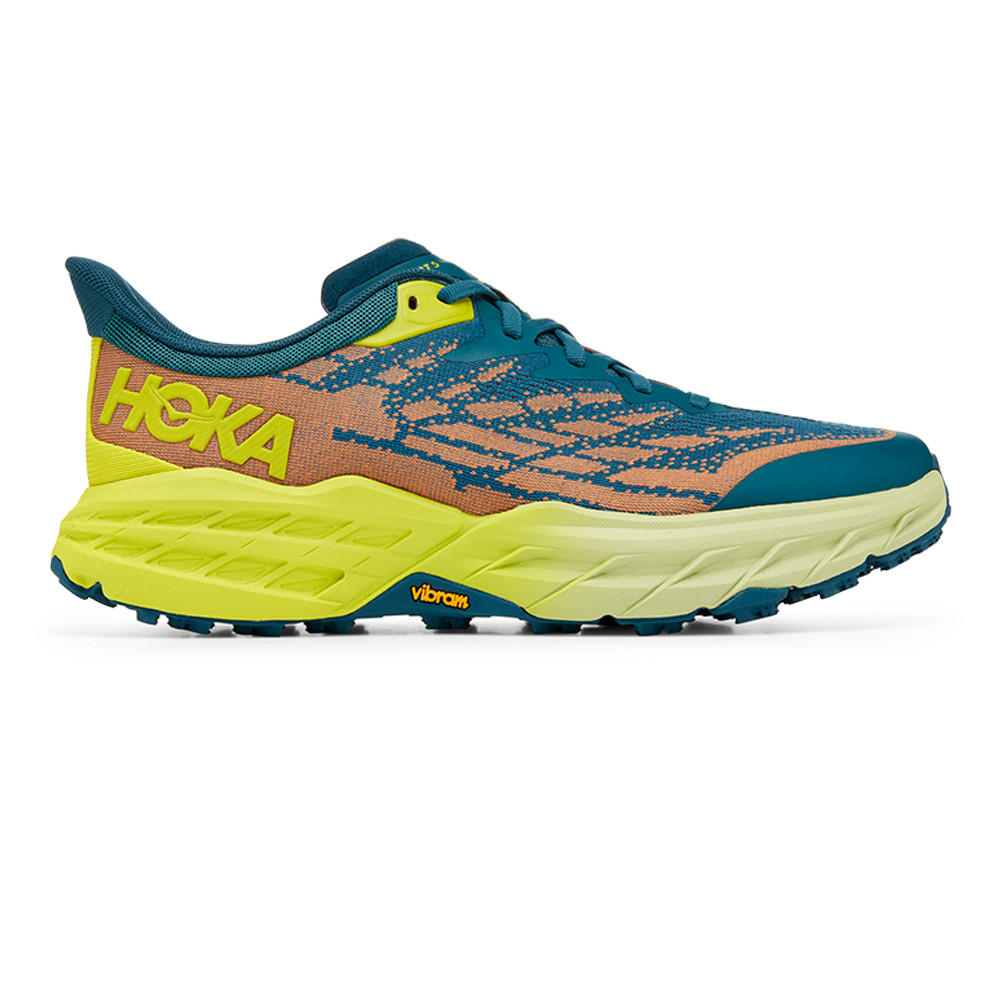
Best for ultra-marathons
There are great carbon plate shoes for ultra-marathons, including Hoka’s Tecton X 2, but the Speedgoat 5 is more comfortable and has a smooth ride that’s perfect for ticking off huge distances. It also has a versatile outsole that grips well on most terrains.
The Best Trail-Running Shoes
Best All-Rounder
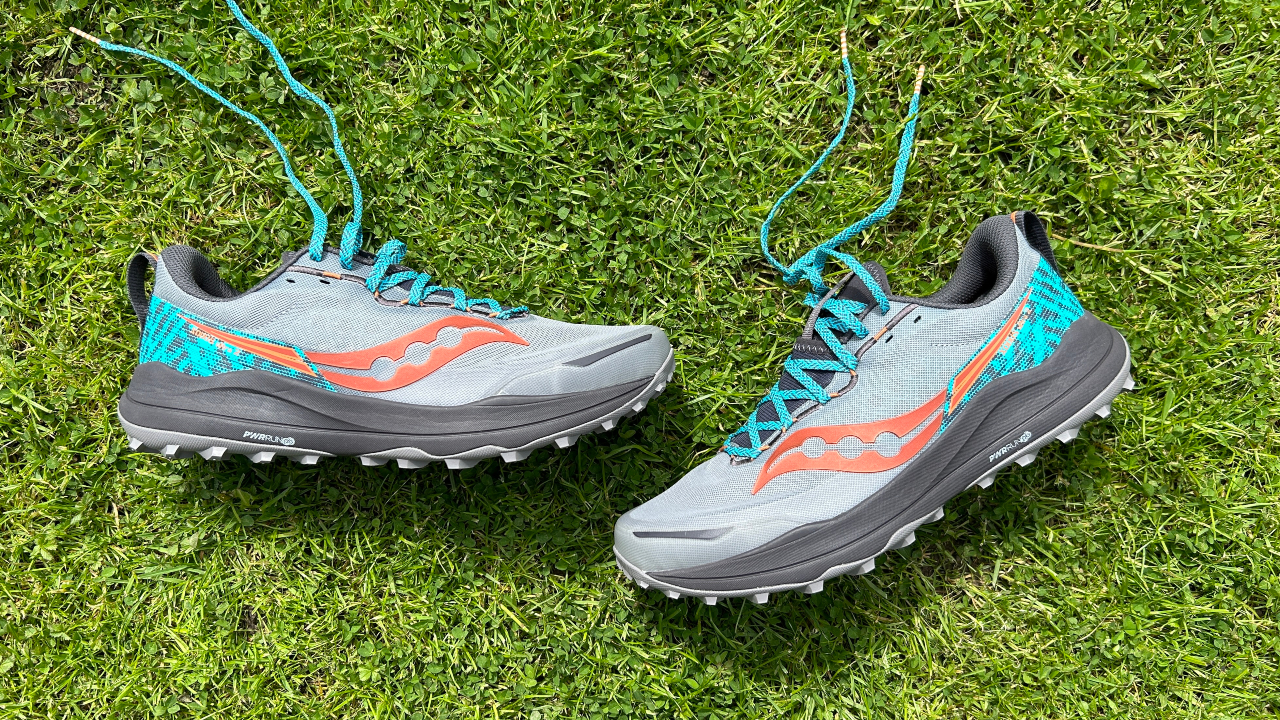
Specifications
Reasons to buy
Reasons to avoid
The Xodus Ultra 2 uses a mix of Saucony’s foams in its midsole to create a stable but lively ride that’s comfortable for long-distance cruising on the trails while still bouncy and speedy enough for faster runs. A firmer PWRRUN foam frame surrounds a springy PWRRUN PB core to create the versatile ride of this shoe that protects the legs well without being bulky.
While the outsole can lose traction if running in deep mud, the shoe has handled every other terrain I’ve tested it on well, and it’s not uncomfortable or prone to slipping when on the road. The shoe also has a secure fit that means you can tackle trickier trails confidently without your foot moving about, and a debris shield that runs around the shoe keeps dust and small rocks at bay.
Read more in my Saucony Xodus Ultra 2 review
More great all-rounders ↴
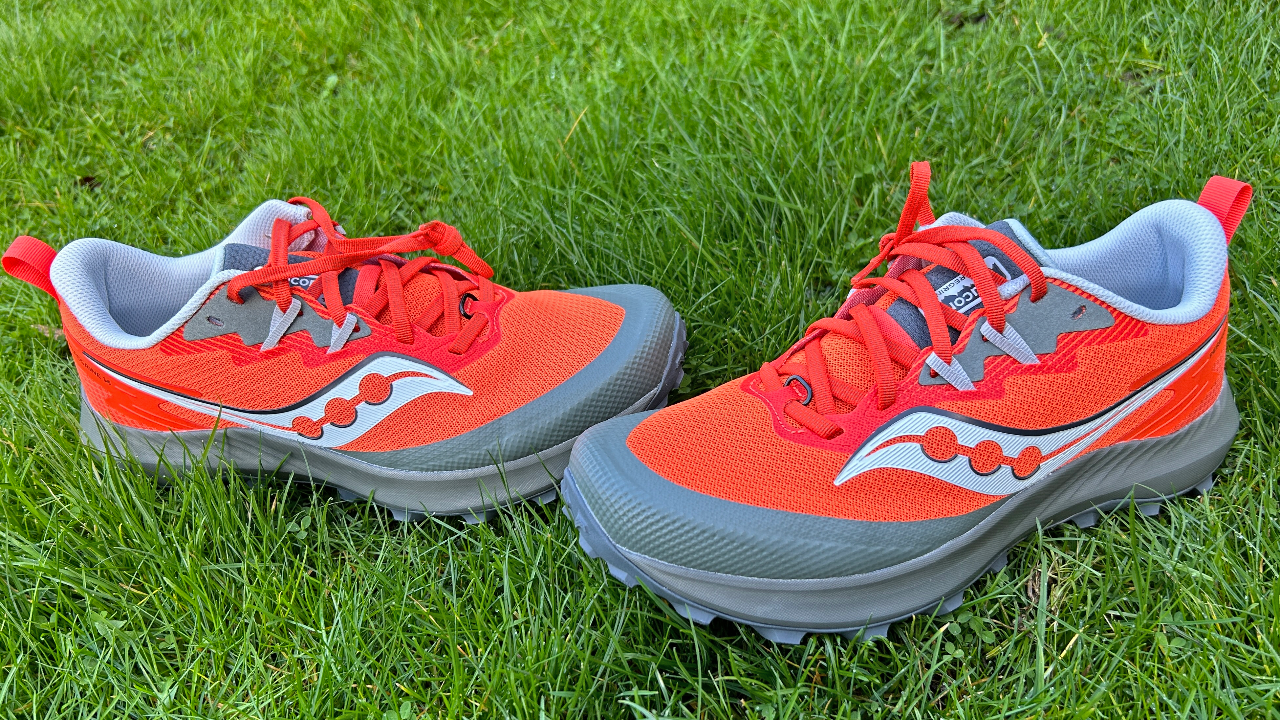
Specifications
Reasons to buy
Reasons to avoid
I’ve tested several generations of the Peregrine and it’s always been one of the best all-rounders for those who spend a lot of time on soft ground, with its outsole gripping well even in deep mud while still being comfortable on hard trails. That all remains true of the Peregrine 14, which is similar to the 13—so looking for a deal on the older shoe may deliver better value.
The Peregrine 14 is an excellent shoe though, with enough cushioning and a rock plate to protect the legs and feet on longish runs—though those heading to ultra-marathon distances may prefer a more cushioned option. The Peregrine 14 is quite light too, and works well for faster trail runs. It also comes in a Gore-Tex version for those who want a waterproof trail-running shoe.
Read more in our Saucony Peregrine 14 review
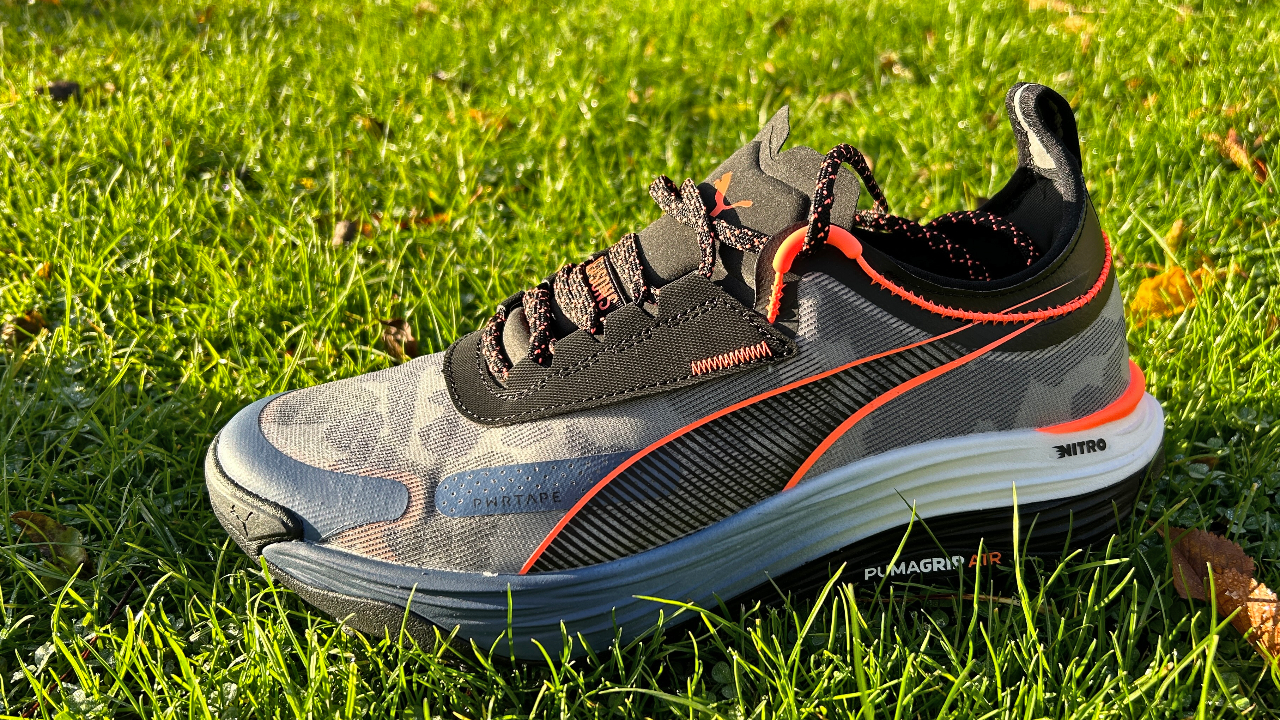
Specifications
Reasons to buy
Reasons to avoid
The Voyage Nitro 3’s outsole has gripped brilliantly for me across a range of winter terrain in the UK, including mud, slick paved surfaces and steep, grassy and icy hills. The Nitro foam midsole delivers versatility too, in the form of a ride that’s comfortable for slow and long plods but also has some bounce and firmness when you want to run fast.
I found the Voyage Nitro 3 a great winter all-rounder in particular, and the Gore-Tex version of the shoe that costs $30/£20 more would be even better for cold and wet climates. The shoe is not the most flexible and doesn’t have a rock plate, so it may not be so comfortable or perform so impressively on rocky ground.
Read more in my Puma Voyage Nitro 3 review
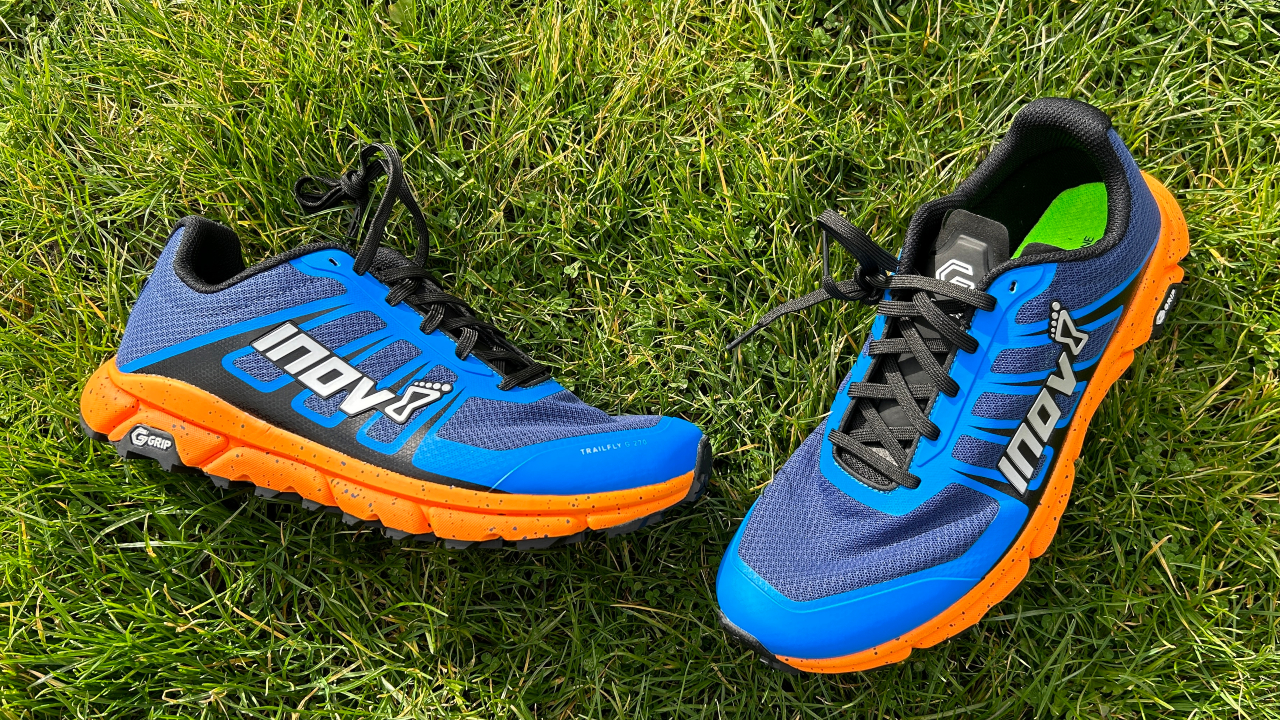
Specifications
Reasons to buy
Reasons to avoid
As with the Speedgoat 5, the Inov-8 Trailfly G 270 V2 is one of the most versatile trail-running shoes, but takes a different approach from that Hoka shoe with a lower midsole stack and a more natural feel to its ride. As a result the Trailfly is less comfortable than the Speedgoat on long stretches on hard ground, but I found it more nimble on tricky trails and fast descents, and the outsole provides outstanding grip in anything but deep mud.
Inov-8’s changes to the second version of the shoe are all found in the upper, which is now more comfortable and durable. Durability is a feature of the Trailfly G 280 V2 in general, and that offsets its somewhat high price—you’ll get a lot of running in the toughest conditions out of this shoe.
Read more in my Inov-8 Trailfly G 270 V2 review
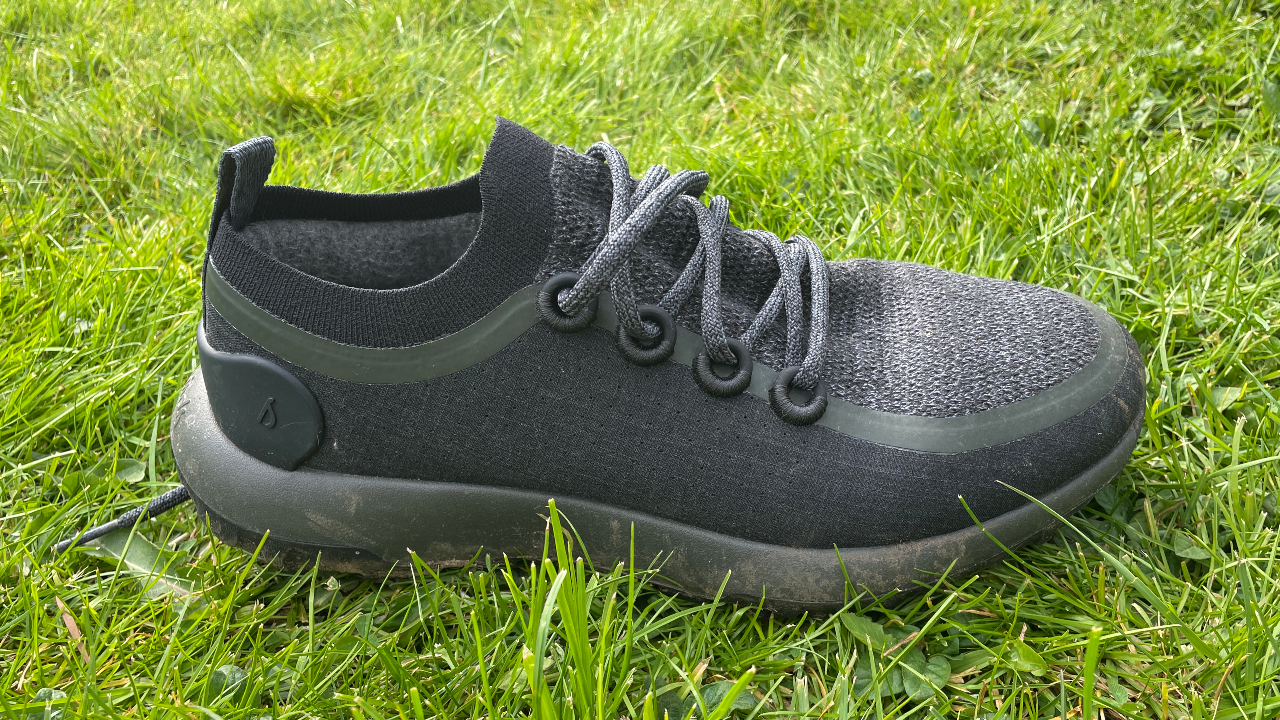
Allbirds Trail Runner SWT
Specifications
Reasons to buy
Reasons to avoid
The Trail Runner is the first off-road shoe from Allbirds, a brand that uses natural, sustainable materials to make all of its products. The materials used in its shoes include Merino wool, tree yarns and foams made from sugar, which offers a welcome alternative for runners who worry about the environmental impact of their footwear and gear.
Performance-wise, the Trail Runner is not as impressive as other options on this list. It’s a pretty heavy and firm shoe, lacking the comfort and bounce you’ll find elsewhere. However, it is still a solid trail-running shoe, and I enjoyed lacing it up for easy plods through my local forest, tackling a variety of terrains including roads, hard-packed trails, grass and boggy ground. When it got really muddy the 4mm lugs did struggle to find grip, but on all other surfaces the shoe was fine.
If you like to hit the trails for easy runs and would rather do so knowing that the shoe you’re running in has caused as little damage as possible to the environment you’re enjoying, the Allbirds Trail Runner SWT will suit you just fine.
Best for racing
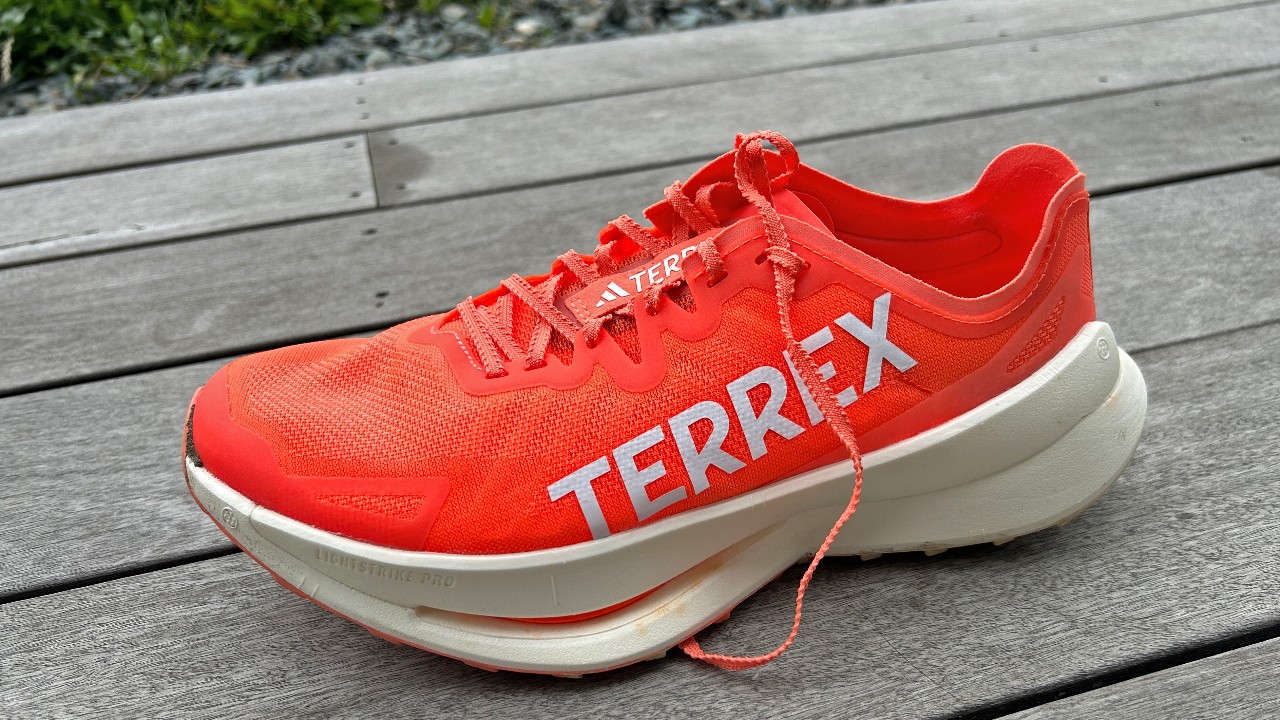
Specifications
Reasons to buy
Reasons to avoid
Many brands have now attempted to bring the foams and technology from the best carbon plate running shoes for the road to the trails, but none have done so as successfully as Adidas has with the Agravic Speed Ultra. It’s a shoe that delivers the bouncy, propulsive feel I expect from a super-shoe thanks to the large stack of Lightstrike Pro foam and the plastic EnergyRods in the midsole, and the pronounced rocker shape also aids fast running.
Aside from the Continental rubber outsole, which grips well on hard trails but is not so well-suited to the mud, the Agravic Speed Ultra makes few concessions to the extra demands of trail running compared with road running. It’s not the most stable trail shoe, with a narrow midfoot, which might be a concern for some on uneven ground. However, I loved cruising long-distances in the shoe—with my longest run in it being 30 miles—as well as speeding through shorter runs, and it has a faster feel than other trail super-shoes because of its aggressive design.
Read more in my Adidas Terrex Agravic Speed Ultra review
Best Waterproof Trail Shoe
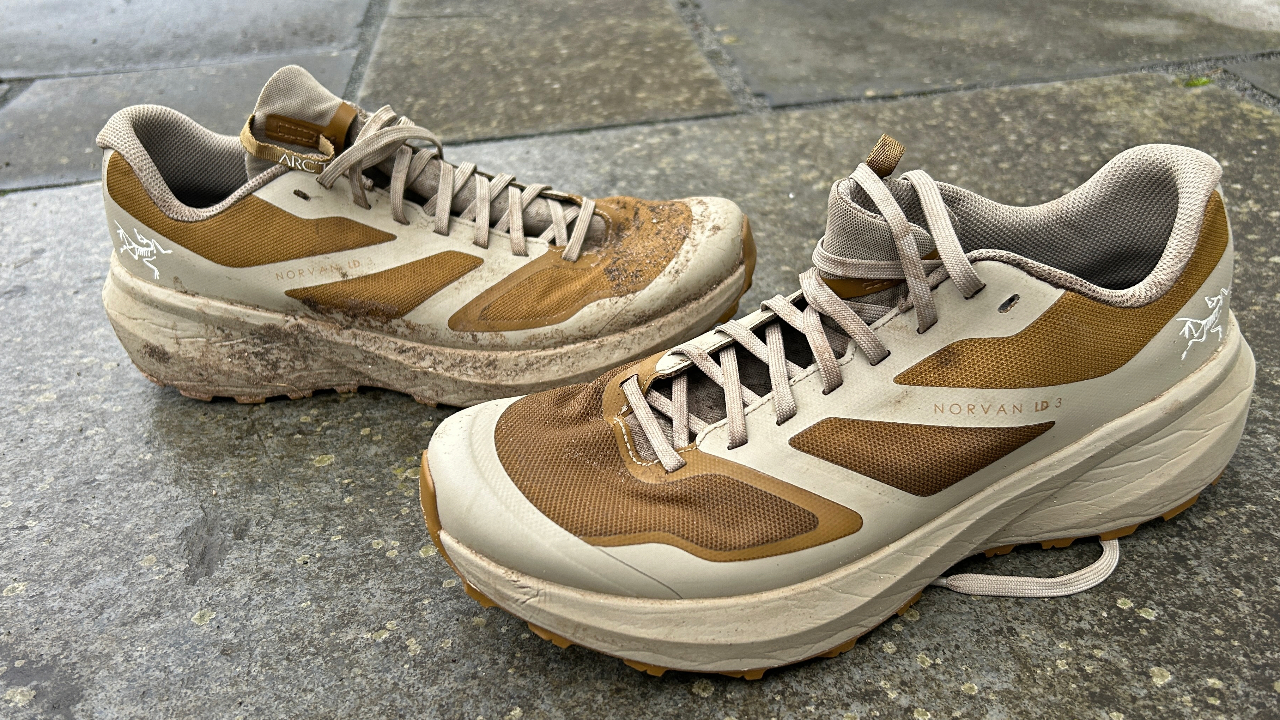
Arc’teryx Norvan LD 3 GTX
Our expert review:
Specifications
Reasons to buy
Reasons to avoid
The regular Norvan LD 3 is a great trail-running shoe, providing a comfortable ride for cruising through long runs, but this waterproof version was brilliant during my winter trail-running, keeping my feet warm and dry on long runs in freezing conditions. It’s expensive, and the Saucony Peregrine 14 GTX is a better-value pick for those seeking a waterproof trail shoe, but the Norvan LD 3 GTX is more comfortable than the Saucony for long distances. While the Vibram Megagrip outsole doesn’t grip well on deep mud, I’ve not had problems on any other kind of terrain—and I’ve used the shoe on grassy and rocky trails with steep climbs and descents, as well as long stints on the road, where it’s still comfortable.
Read more in my Arc’teryx Norvan LD 3 GTX review
Best Trail-Running Shoe For The Mud
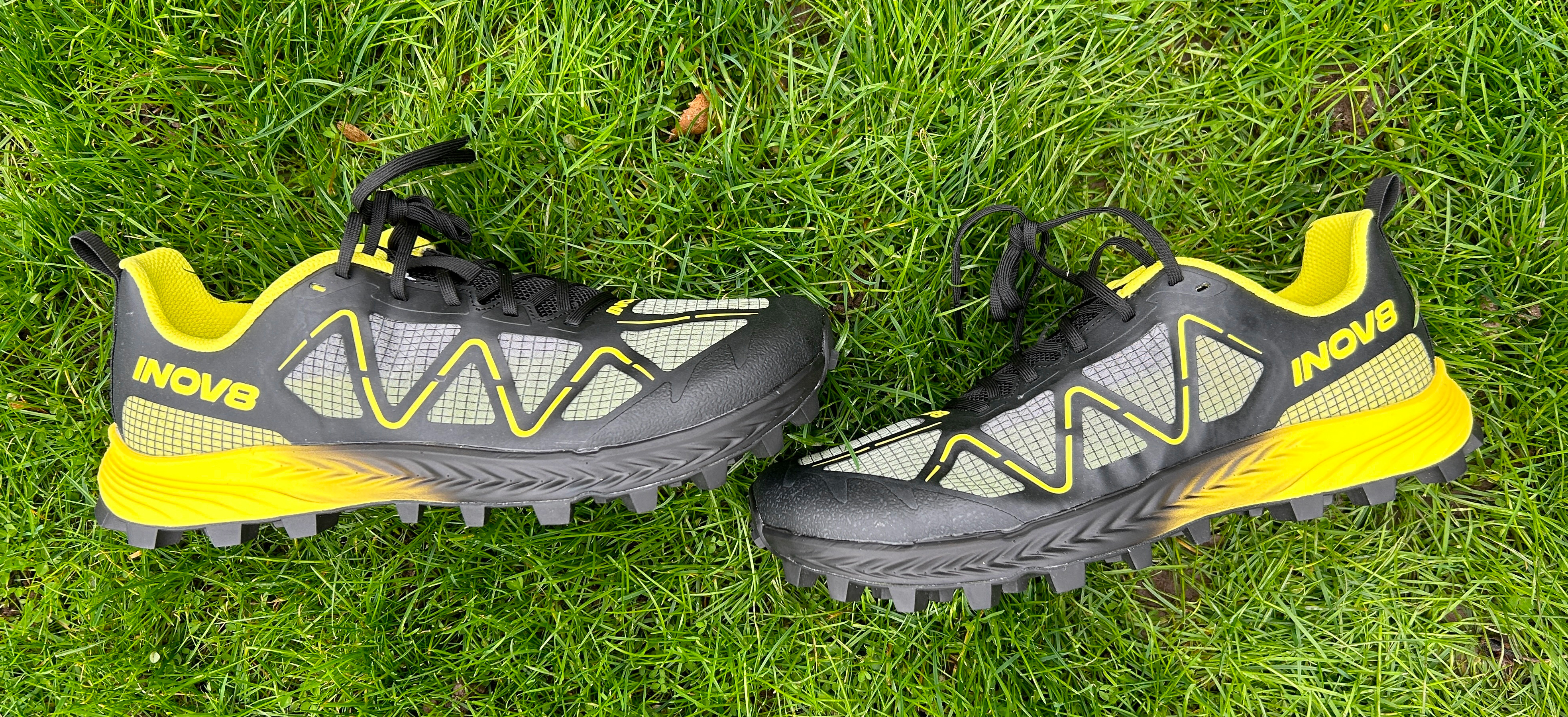
Specifications
Reasons to buy
Reasons to avoid
The Inov-8 Mudtalon Speed combines features from two of the brand’s other lines—the lightweight X-Talon and the more protective Mudclaw—to create a shoe that’s nimble and quick for fast running on soft ground, but which has enough cushioning underfoot for spells on harder trails and longer runs.
I loved using it for a hilly five-mile XC race on a mix of mud and frozen grass. I’ve also enjoyed using it for longer easy training runs on soft ground, which I wouldn’t do with the lighter X-Talon shoe because of its lack of cushioning underfoot. The Mudtalon Speed is a versatile soft ground option, even if it’s not an all-rounder shoe since it’s not that comfortable for long spells on harder tracks.
Read more in my Inov-8 Mudtalon Speed review
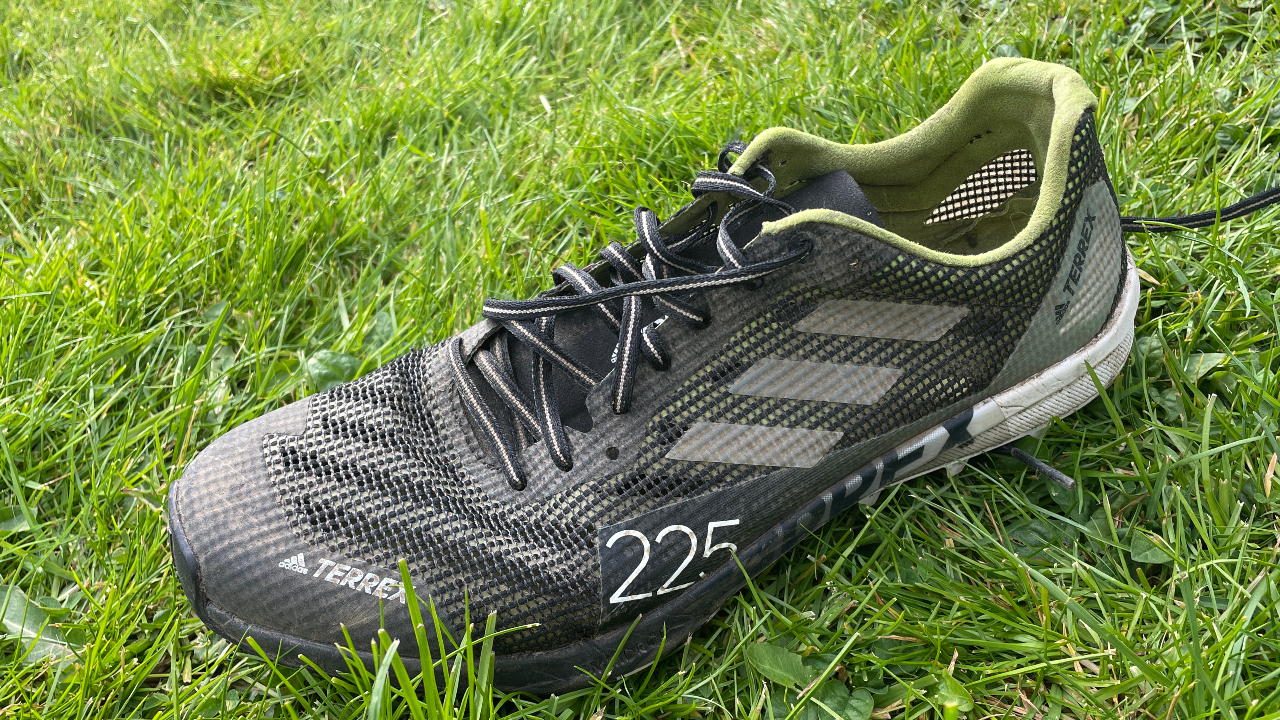
Adidas Terrex Speed SG
Specifications
Reasons to buy
Reasons to avoid
The SG in the name of these shoes stands for soft ground, and the 7mm chevron-shaped lugs provide exceptional grip on muddy terrain as well as on steep, slick hills. The shoe also lives up to the Speed in its name thanks to its low weight, and I’ve found it a great option for the XC season, tackling 8km and 16km races in it.
While the midsole cushioning is thin, and firmer than you’ll find elsewhere, the Terrex Speed SG is not uncomfortable over long distances—as long as you’re sticking to mostly soft ground overall. I did a 27km run in the Pentlands in Scotland that contained plenty of harder sections and the shoe protected my legs well, while gripping like a champ on both muddy hills and icy paths.
More great trail-running shoes for the mud ↴
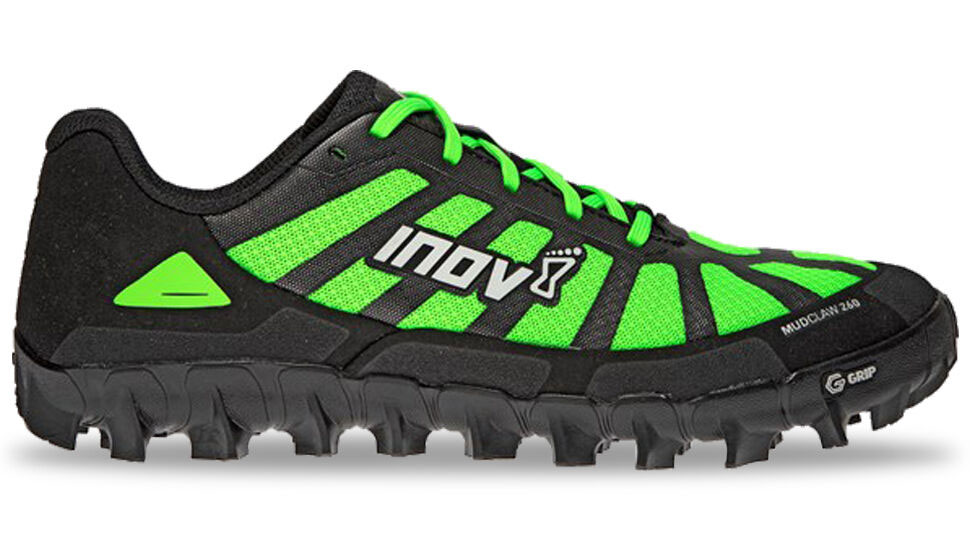
Inov-8 Mudclaw G 260 V2
Specifications
Reasons to buy
Reasons to avoid
The giant 8mm studs on the bottom of this shoe mean that you’ll have a fighting chance on the muddiest trails and the steepest fells. It also makes the Mudclaw a great pick for obstacle course races (which are never short of boggy ground), especially since the shoe uses Inov-8’s lightweight and extremely durable graphene-enhanced rubber on the outsole of the shoe, so you can rely on good grip for years to come.
While the outsole remains unchanged from the original Mudclaw G 260, Inov-8 has toughened up the front part of the upper for the second version, to ensure that said upper can last as long as the graphene-enhanced studs underfoot. While I find the Mudclaw a little bulky for faster runs it’s a durable training shoe for those who stick to soft ground.
Best For Road To Trail
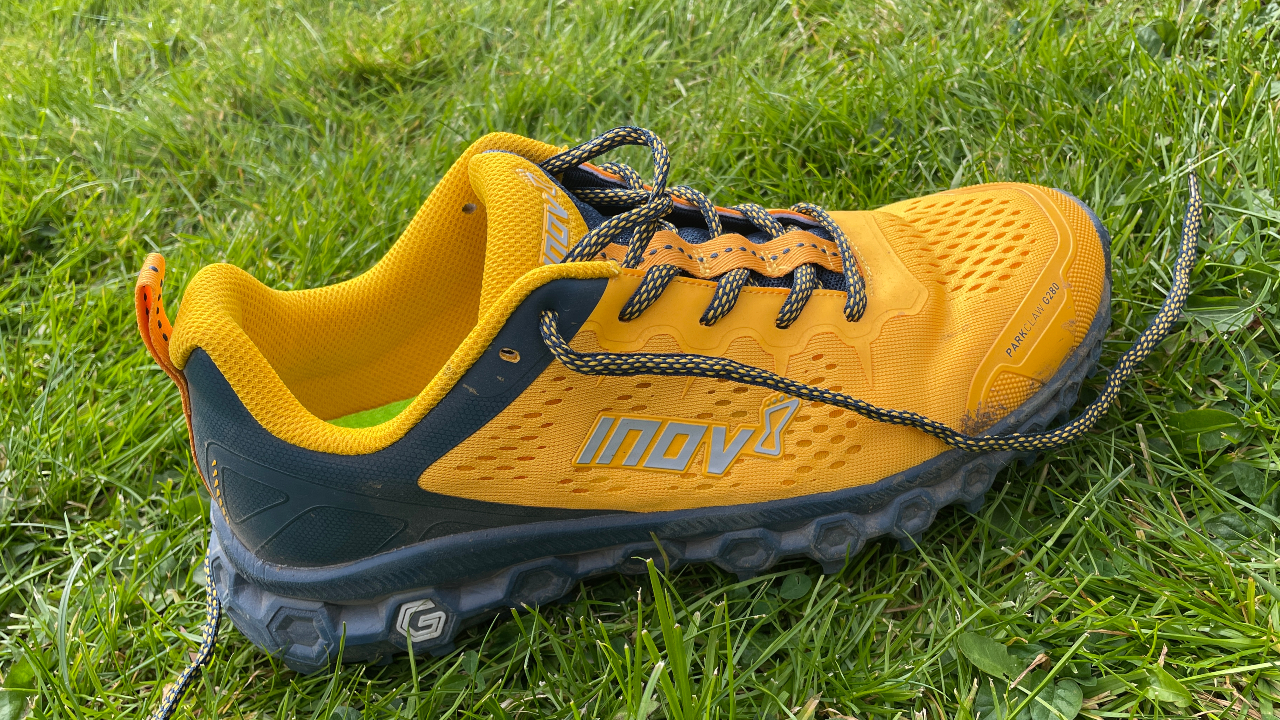
Inov-8 Parkclaw G 280
Specifications
Reasons to buy
Reasons to avoid
The Parkclaw G 280 does not look like a typical road-to-trail shoe: it doesn’t have a huge stack of cushioning and the 4mm lugs look like they’d offer great grip off-road but be uncomfortable on it. However, looks can be deceiving, and I found the Parkclaw comfortable for long stretches of road running and the graphene material used for the outsole is hard-wearing, so you need have no fears about the lugs grinding down.
Inov-8 is renowned for shoes that grip well on all kinds of terrain and even though the Parkclaw is a road-to-trail shoe it offers better grip than many full trail shoes. The lugs bite into soft ground and I had no problems with traction on wet or uneven trails. Given the terrain it can handle, the Parkclaw is one of the most versatile shoes available.
More recommended road-to-trail shoes ↴
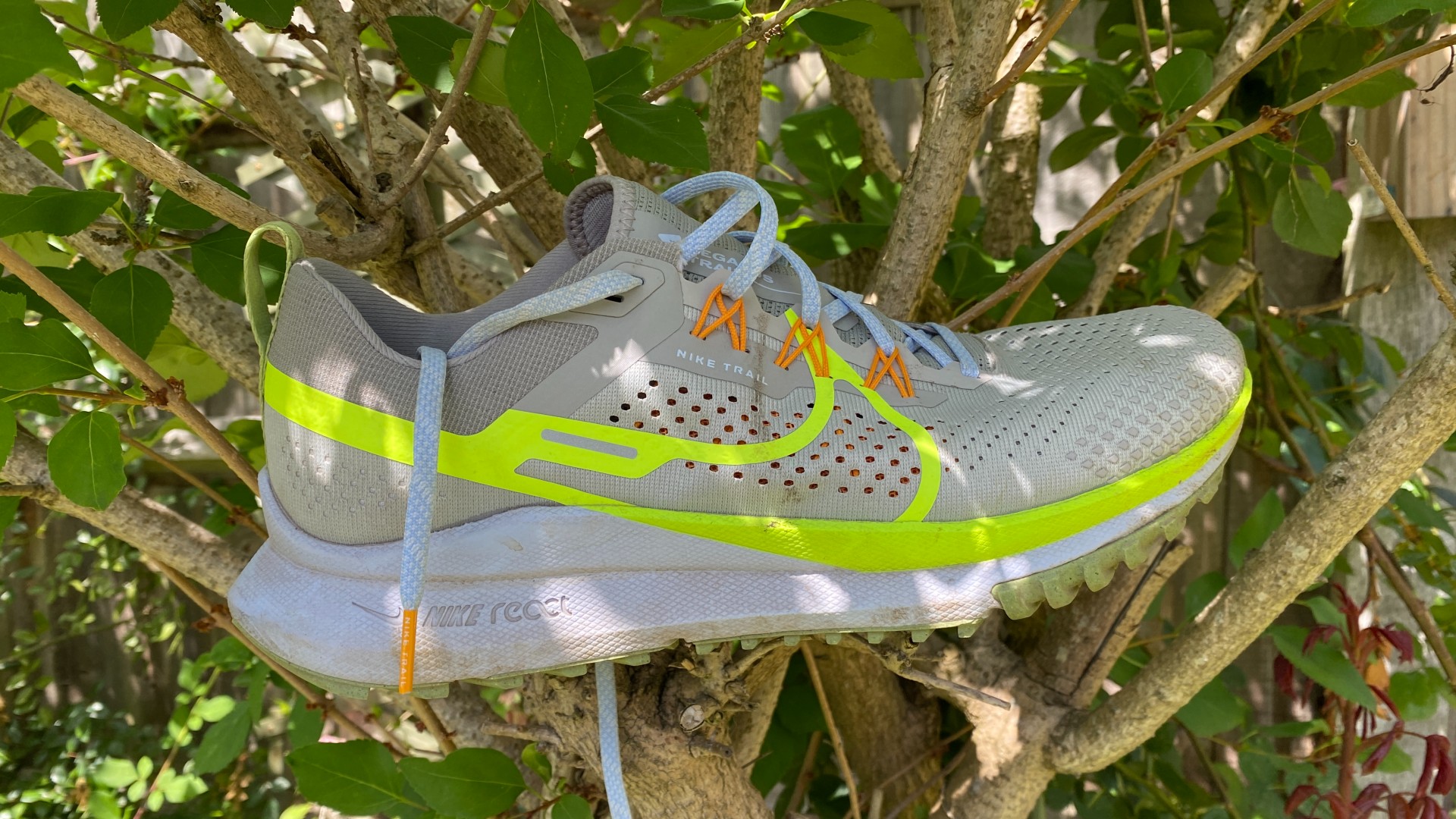
Specifications
Reasons to buy
Reasons to avoid
If you divide your running between roads and light trails and want a comfortable shoe to cruise around in, the Pegasus Trail 4 is your best bet. The latest version of the shoe is lighter and offers better grip in the wet than the Pegasus Trail 3, but its signature feature remains how comfortable it is on roads and harder trails.
The Pegasus Trail 4 still isn’t the shoe you want on tricky terrain, especially when powering down treacherous downhills, but keep it mostly on the road or well-groomed trails and it will serve you well. It’s also one of the better-looking trail-running shoes I’ve come across, which only increases its versatility—I found it ideal for a vacation since it can handle most terrain as well as being comfortable and stylish enough for sightseeing.
Read more in my Nike Pegasus Trail 4 review
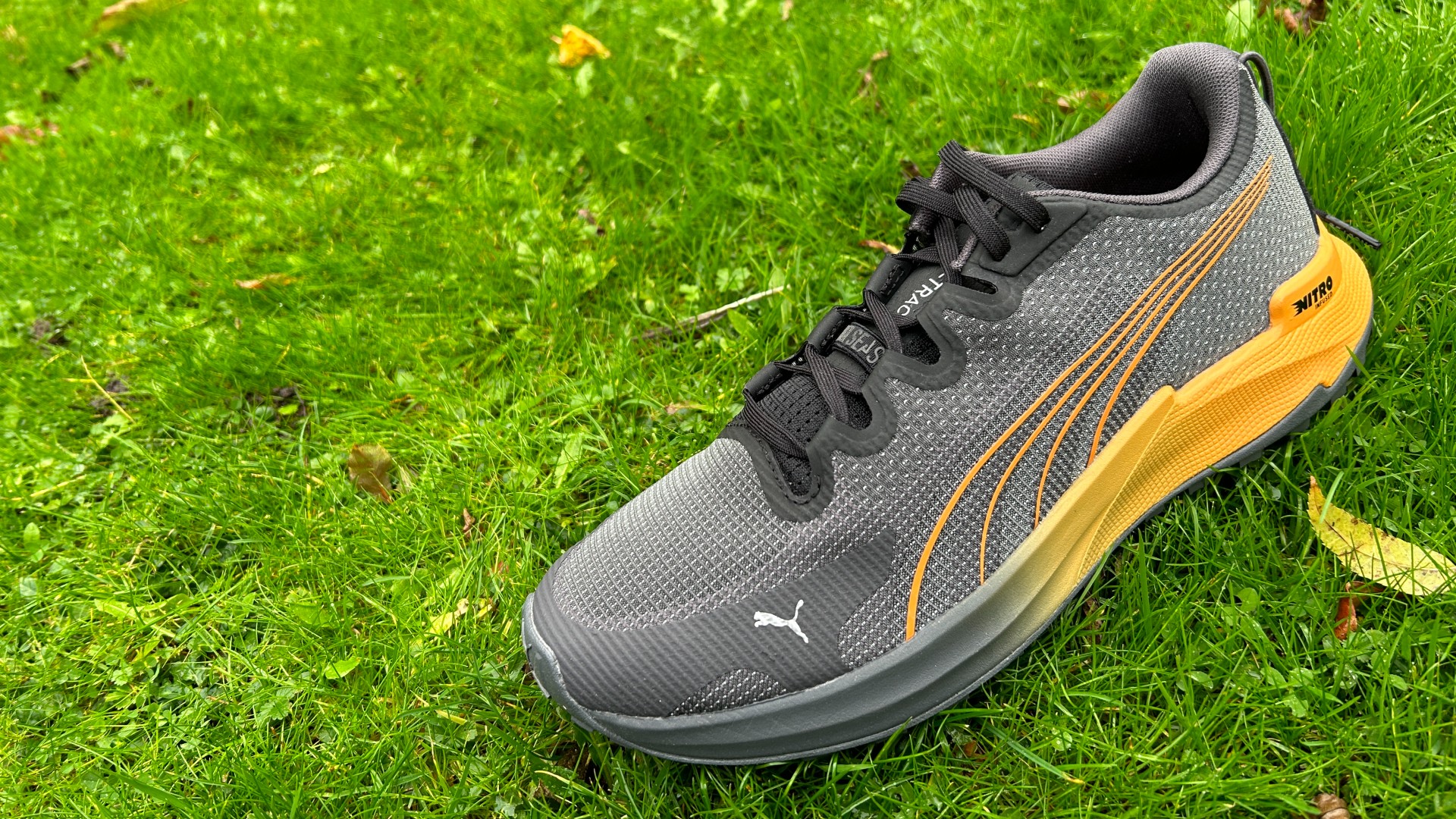
Specifications
Reasons to buy
Reasons to avoid
The fact that it is cheaper than many trail-running shoes is no reflection of the quality of the Fast-Trac Nitro. It’s lighter and speedier than most other all-terrain options thanks to the nitrogen-infused midsole, which provides a responsive ride when you up the pace.
While the Fast-Trac Nitro is positioned as a road-to-trail shoe, it provides grip even in quite deep mud, and also kept me upright on frozen pavements and snowy slopes during testing. It’s not as comfortable as other road-to-trail shoes for longer stretches on the road, but it still works well on the asphalt, and it’s a great option for shorter races with road and trail sections because of the lightweight design.
Read more in my Puma Fast-Trac Nitro review
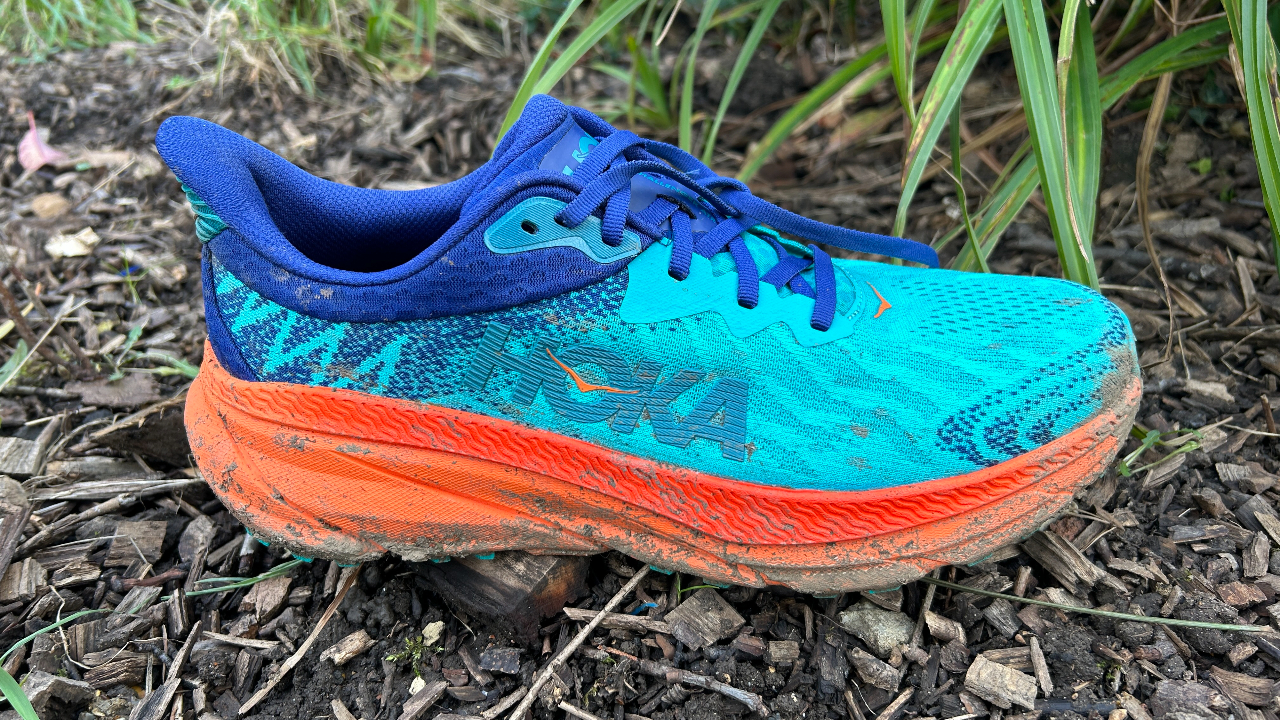
Specifications
Reasons to buy
Reasons to avoid
Despite having a high and wide stack of midsole cushioning, the Challenger 7 is a lightweight road-to-trail shoe that is surprisingly versatile, performing well on fast and slow runs alike. It is comfortable over long distances, even if you stick exclusively to the road, and it gripped well for me on a variety of light trails and in mud and snow.
On trickier trails, such as frozen, rutted mud, the size of the shoe did count against it in that it didn’t feel very agile, while the grip isn’t quite reliable enough to use on steep, grassy descents with confidence. Keep the Challenger on lighter trails or the road, though, and it can handle pretty much any kind of run.
Read more in my Hoka Challenger 7 review
Best Value Trail-Running Shoe
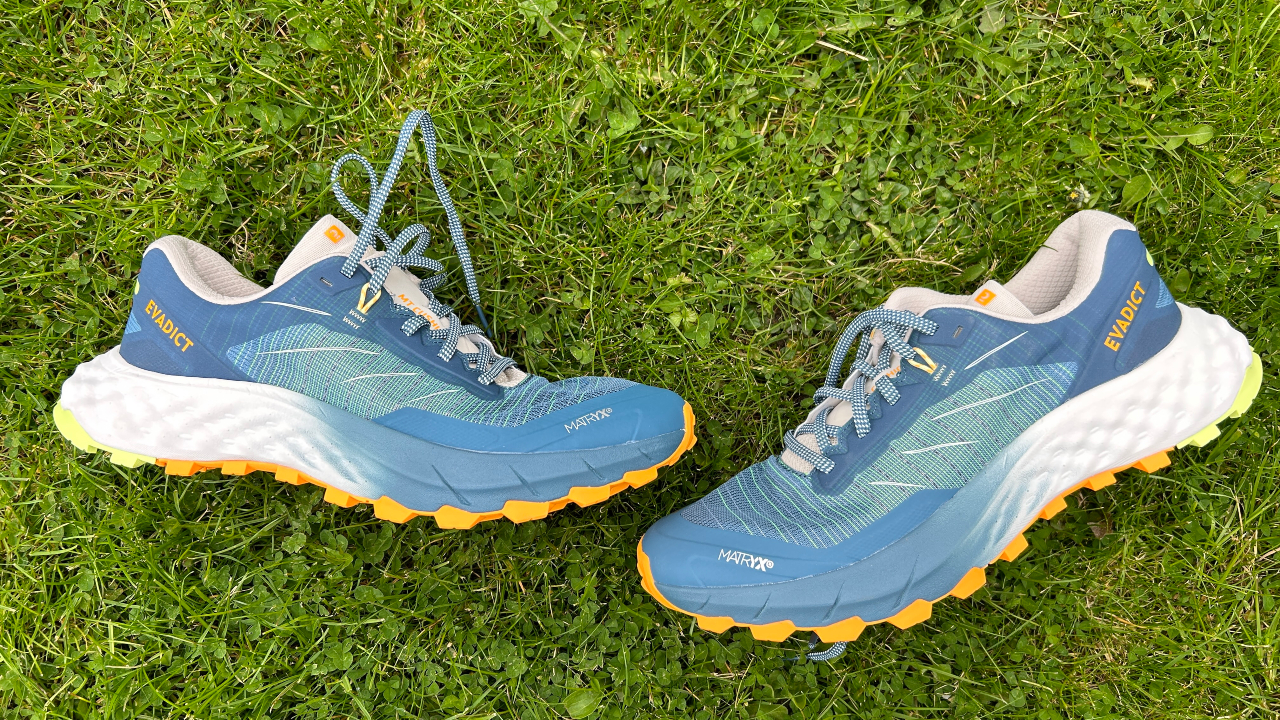
Specifications
Reasons to buy
Reasons to avoid
The Evadict MT Cushion 2 is a versatile trail-running shoe at a great price. While the Kalensole midsole material is not the softest or most exciting foam in the world, it provides a stable and comfortable base for your trail runs, and the outsole grips well across most terrains with the exception of particularly deep mud.
The MT Cushion 2 is not as cushioned as some of the other top picks on this list, but I found it comfortable enough for my trail runs, especially when mainly on soft ground. If you have ultramarathons on hard ground in mind a more cushioned shoe will offer better protection, but the MT Cushion 2 will cover many people’s trail-running needs at an appealing price.
Read more in my Evadict MT Cushion 2 review
Best value racing shoe
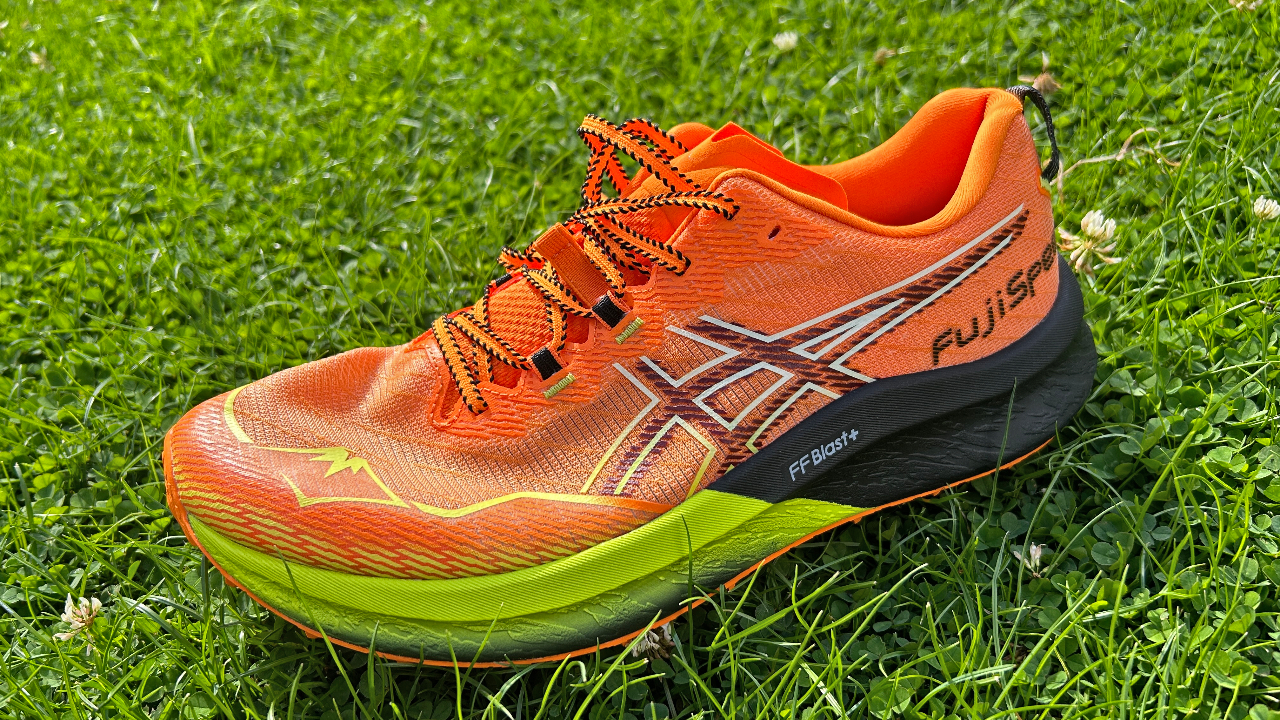
Specifications
Reasons to buy
Reasons to avoid
The Fujispeed 2 is not only great value compared with other carbon plate trail shoes, it’s also faster than most—at least when running on flatter, less technical trails. The rocker and plate combine to provide a fast and smooth ride with a good amount of punch, and the light and nimble design helps you to keep turning your legs over deep into hard runs. The Adidas Terrex Agravic Speed Ultra delivers a faster, more propulsive ride, but if you consider the rocker and soft foam on the Adidas shoe to be risky for off-road running, the Fujispeed 2 is a great alternative.
It’s firmer and less comfortable than other plated trail shoes, however, which means I don’t rate the Fujispeed 2 as highly for those lining up an ultra-marathon, when the added comfort and stability of the Saucony Endorphin Edge, Nike Ultrafly or Hoka Tecton X2 will be welcome. It’s also narrow, which will reduce its appeal for those who need a wide fit, or anyone who likes a roomy toe box for when their feet swell during long events.
Read more in my Asics Fujispeed 2 review
More recommended trail-running shoes for racing ↴
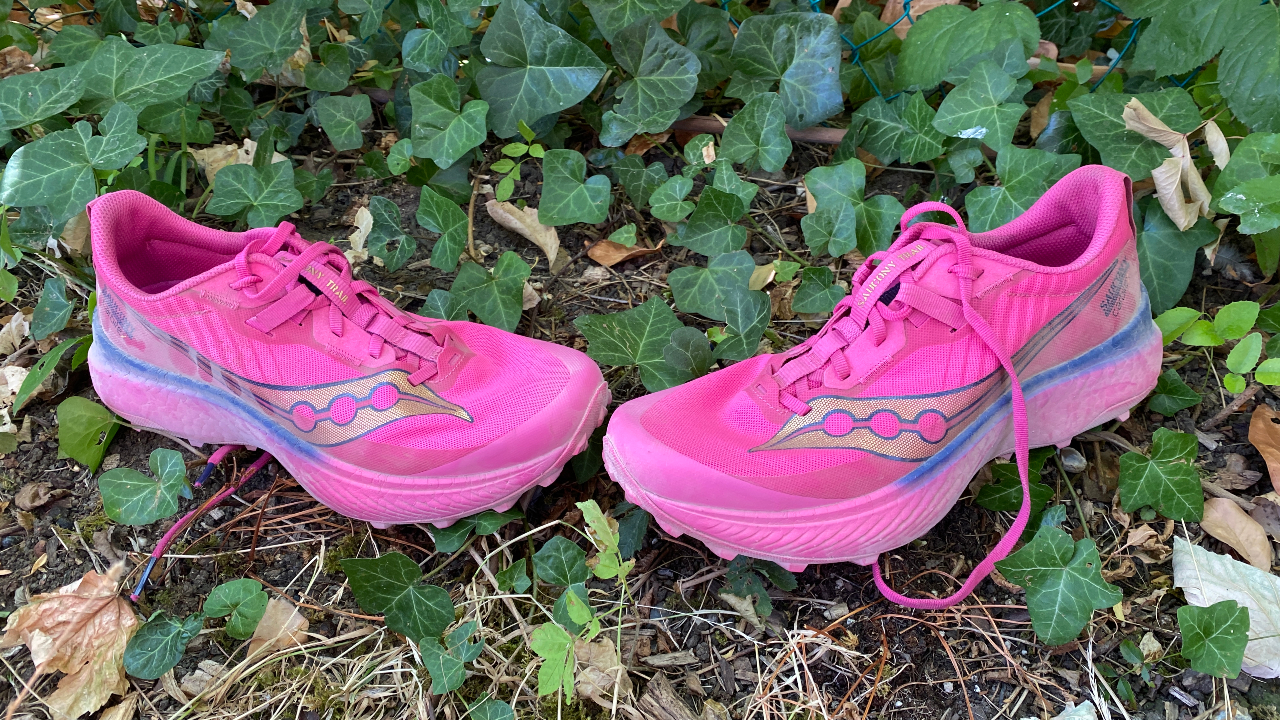
Specifications
Reasons to buy
Reasons to avoid
Saucony’s Endorphin road shoes, particularly the Speed 3 and Pro 3, are among the best in the business, and the Endorphin Edge brings a similar level of performance to the trails thanks to the carbon plate and PEBA-based PWRRUN PB foam in its midsole.
The Edge’s plate is made from Carbitex carbon fiber, which is better suited to the trails because it’s more flexible than the material used on the Pro 3 road shoes. The Edge isn’t too stiff on uneven ground, though I did find it still feels a little clumsy on rutted terrain at times.
When you hit flatter trails, though, the Edge has a smooth and efficient ride. The outsole has gripped well for me across a range of terrains—you can tackle races in the shoe without fear of slipping at the first sign of mud.
Read more in my Saucony Endorphin Edge review
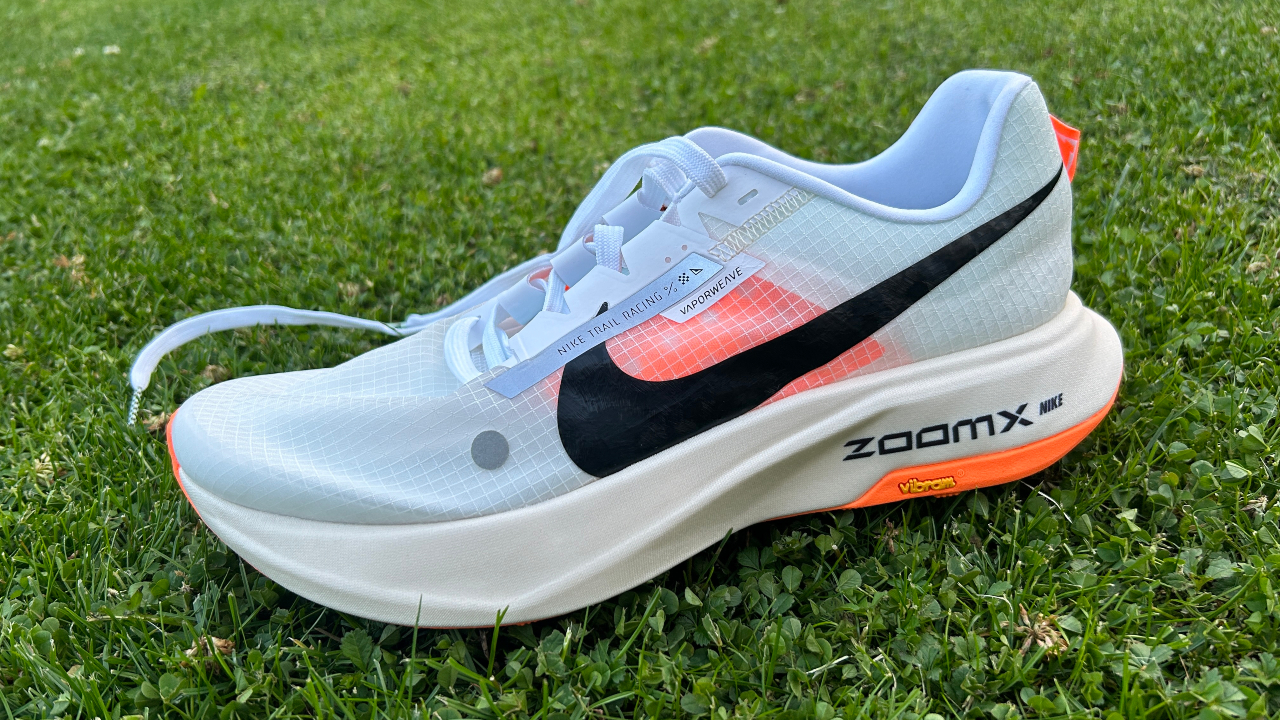
Specifications
Reasons to buy
Reasons to avoid
The Nike Ultrafly isn’t designed to deliver the same springy ride as the Nike Vaporfly, despite having the same ZoomX foam in the midsole and a carbon plate. Instead, it excels at helping you plod at slower paces for immense distances, being more stable and comfortable than its road-racing counterparts.
As a shoe focused on ultra-marathons, it lacks the speed you get from other carbon plate trail shoes for shorter events, though it makes up for that by being comfortable. I did a 30-mile solo run in the Ultrafly during my testing and it protected my legs and feet well. The rockered midsole and plate combine to help you tick along even when tired, and the shoe is stable on uneven ground and steep descents.
The Vibram outsole is a major upgrade on Nike’s in-house rubber and provides reliable grip on tamer and harder trails, although the lugs are too short for extended spells on muddy ground. The upper is lightweight for a trail shoe however, and doesn’t offer much protection from roots and rocks.
Read more in my Nike Ultrafly review
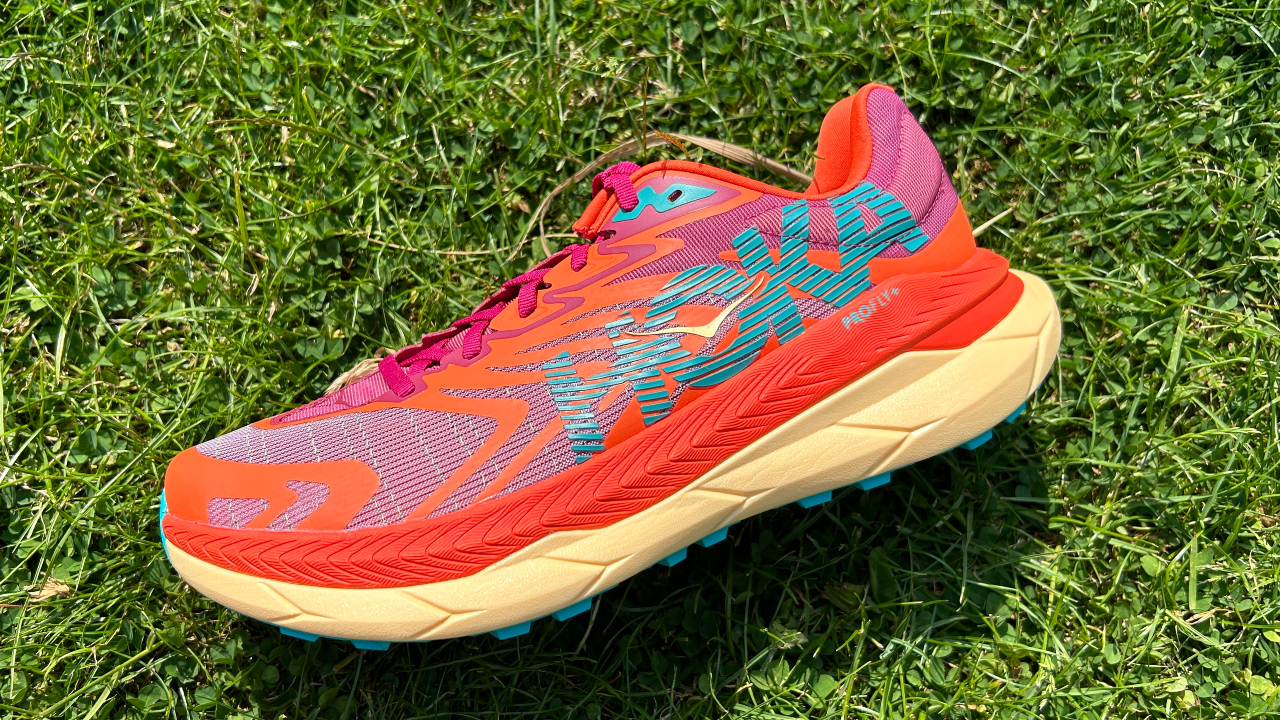
Specifications
Reasons to buy
Reasons to avoid
The Hoka Tecton X2 is similar to the original Tecton X, though the new fast-drying Matryx upper on the second version of Hoka’s carbon racer creates a more secure fit. However, if you spy a great deal on the older shoe it’s worth grabbing.
Underneath that new upper you have the same dual-density midsole with twin carbon plates running in parallel down the length of the shoe. This creates a fast ride that’s still stable and flexible on uneven ground, and the Tecton X2 is also comfortable enough for your longest runs but light enough for short, fast ones as well.
The outsole is designed for hard ground, and the Tecton X2 is smooth and comfortable when running on roads too. Although it is not a shoe to take into deep mud, I found the grip good on dry grass and loose gravel, as well as hard-packed tracks.
Read more in my Hoka Tecton X2 review
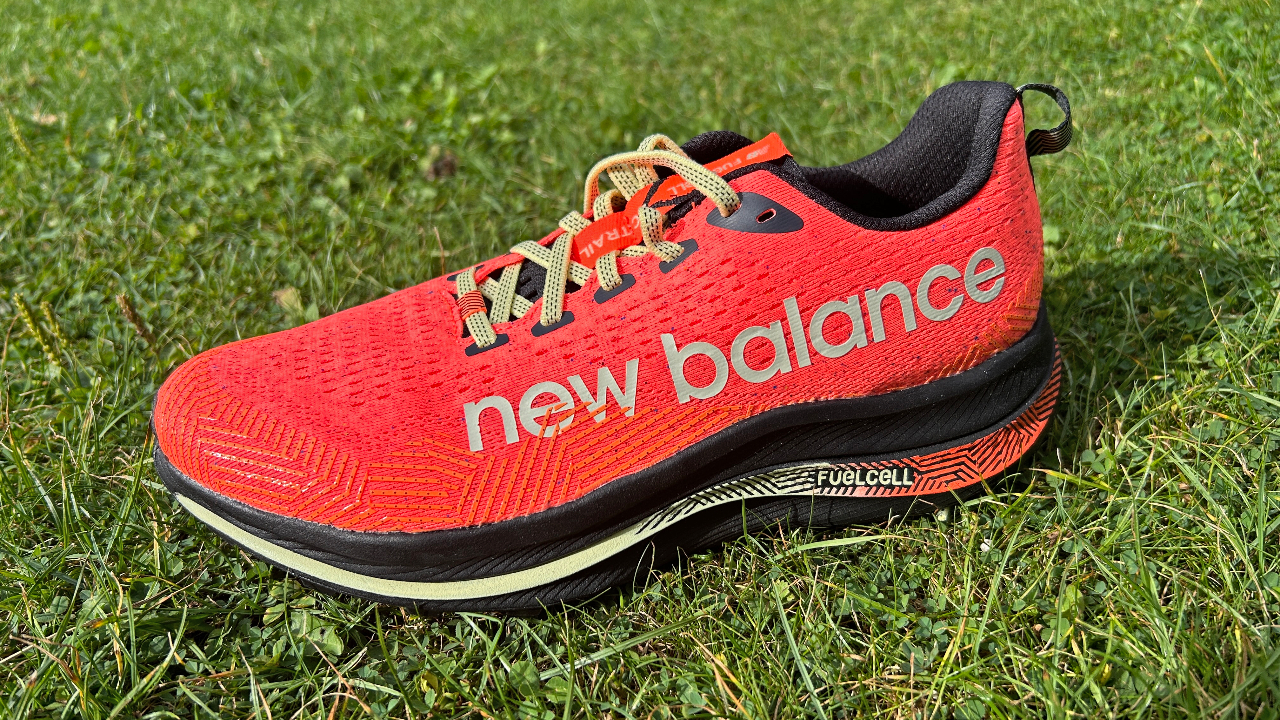
Specifications
Reasons to buy
Reasons to avoid
The New Balance FuelCell SC Trail shares its key characteristics with New Balance’s road racer, the SC Elite v3, in the form of a FuelCell foam midsole that has a carbon plate running through it. New Balance has tweaked the shoe to be more trail-suitable, with the carbon plate forked to add flexibility under the forefoot and the dual-density midsole having a firmer, more stable layer of FuelCell on the bottom.
It’s still bouncy and undeniably fast, and the 10mm drop delivers a snappier ride than most trail shoes, which usually have lower drops or rockers. The SC Trail is also nimble thanks to its narrow design, though this leads to problems with the fit, which I found uncomfortably tight in the toe box. I’d size up for sure, but even then it may be too snug, especially for ultra-marathon distance events.
Read more in my New Balance FuelCell SuperComp Trail review
Best Trail-Running Shoe For Ultra-Marathons
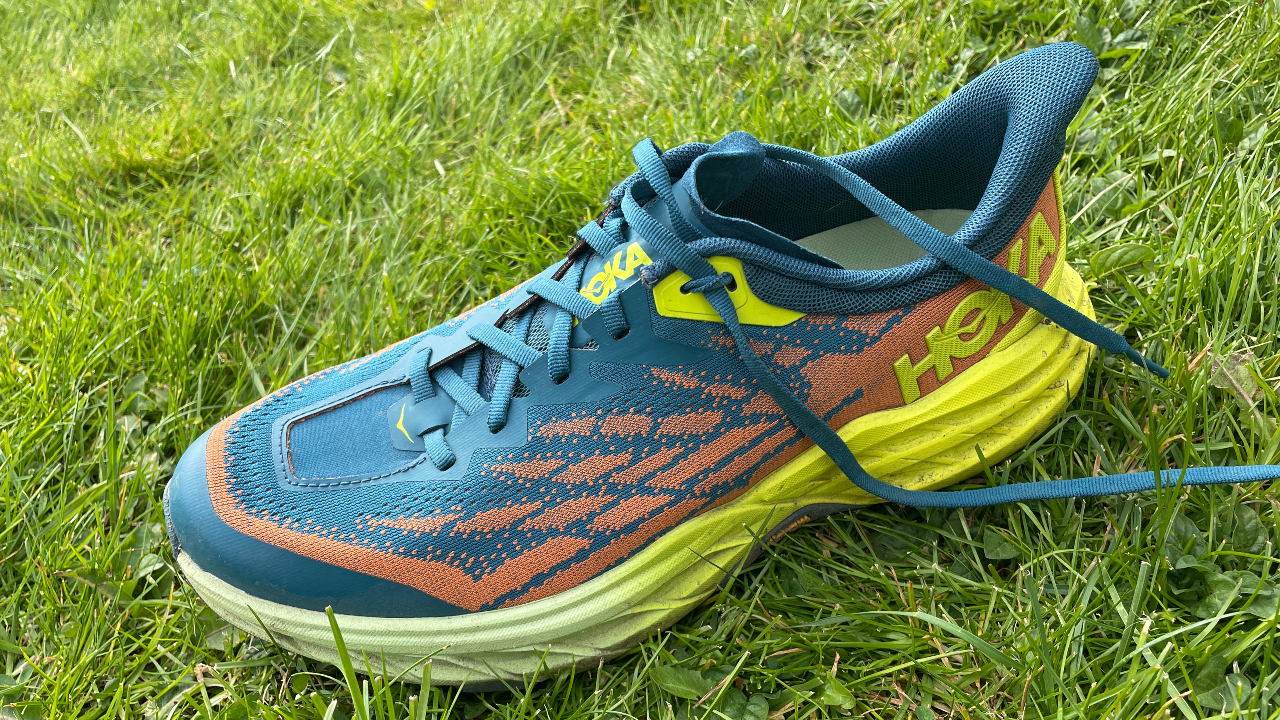
Specifications
Reasons to buy
Reasons to avoid
The Hoka Speedgoat 5 is a long-distance racing shoe named after ultramarathon legend Karl “Speedgoat” Meltzer. It could be a top pick in almost any of my trail-running shoe categories—perhaps with the exception of shoes for the mud since it’s mainly built for harder terrain and I found it a bit slippy on boggy ground.
Hoka redesigned almost every aspect of the Speedgoat with the 5. The new shoe has a lighter upper and a springier midsole than the Speedgoat 4, plus 5mm stepped lugs that offer reliable grip on technical terrain and a comfortable ride when on the road or hard, flat trails.
The shoe has a comfortable and smooth ride that I found enjoyable for runs of any distance, so even if you’re not planning an ultramarathon any time soon the Speedgoat 5 merits your attention.
Read more in my Hoka Speedgoat 5 review
More recommended trail-running shoes for ultra-marathons ↴

Specifications
Reasons to buy
Reasons to avoid
The grip on Inov-8 shoes has always been excellent and, true to form, the Trailfly G 280 is as reliable as any shoe at finding purchase when off-road. The grooves in the midsole also create a flexible feel for a shoe with a high stack that makes it feel more nimble when flying down hills in particular, and the nitrogen-infused Flyspeed midsole provides a comfortable ride over long distances.
I did have some dicey moments in the Trailfly G280 when using it on the road, though, and fell over on slippery pavements coming back from the trails on one run, so it’s not one for road-to-trail cruising. On any kind of trail, however, it grips like a champ.
Read more in my Inov-8 Trailfly Ultra G 280 review
Best Trail-Running Shoes For Hard Trails
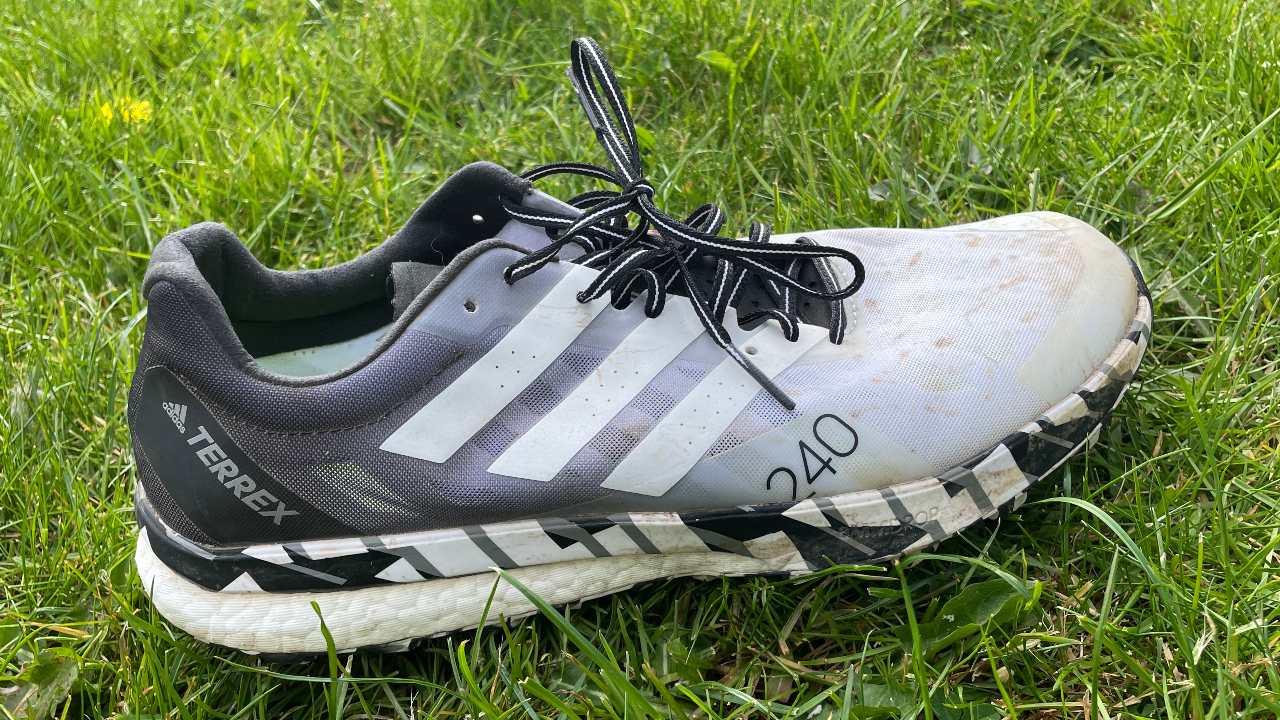
Adidas Terrex Speed Ultra
Specifications
Reasons to buy
Reasons to avoid
Adidas garnered input from ultra-marathoner Tom Evans when building this very-long-distance racer, but we found it a versatile shoe that anyone who regularly hits hard trails will enjoy using. The midsole has a layer of Boost foam on the bottom to cushion your landings, while the layer of Lightstrike foam above it keeps the weight down and increases the ride’s responsiveness. The shallow chevron lugs on the outsole are closely spaced to increase the comfort and grip of the shoe when on harder trails, and the spacious toe box can accommodate the inevitable swelling of your feet during long runs.
The expense might put off anyone who isn’t planning to fly through epic events, but it’s a fast and durable option that works beautifully for runs on harder ground, short or long, slow or fast.
More recommended trail-running shoes for hard trails ↴
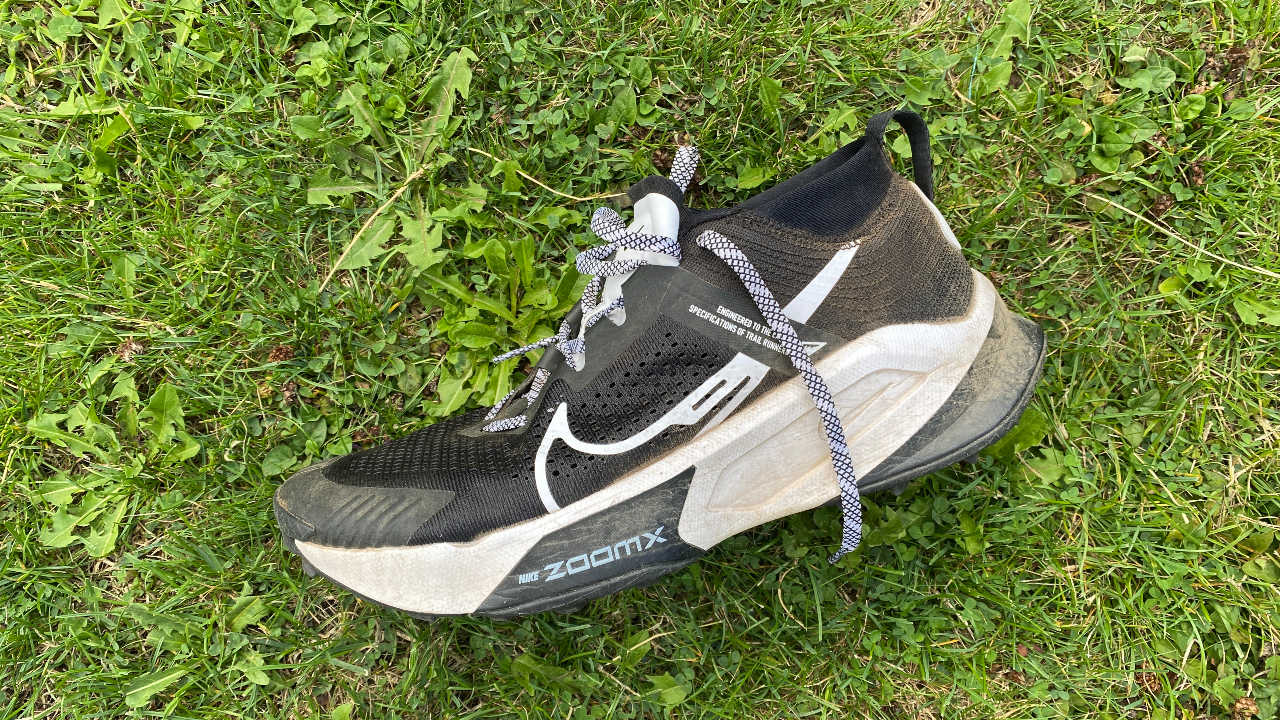
Specifications
Reasons to buy
Reasons to avoid
The most exciting feature of the Zegama is that it uses the soft and springy ZoomX foam found in Nike’s top road racing shoes, the Vaporfly and Alphafly, as well as the bouncy Invincible 2 training shoe. However, the Zegama’s midsole is not just ZoomX, which would be too soft on the trails if used by itself, there’s also an EVA foam called SR-02 to help stabilize and protect the ZoomX foam.
As a result the Zegama has a firmer ride than I expected, but it’s still up there with the most comfortable trail shoes for long-distance runs, and the upper is well designed to protect the foot and stop debris from getting inside. The main drawback here is the outsole, which does not grip well on wet trails – a common problem with Nike’s trail shoes. Keep it on dry tracks, however, and the Zegama is a solid new trail option for those seeking comfort.
Read more in my Nike ZoomX Zegama review
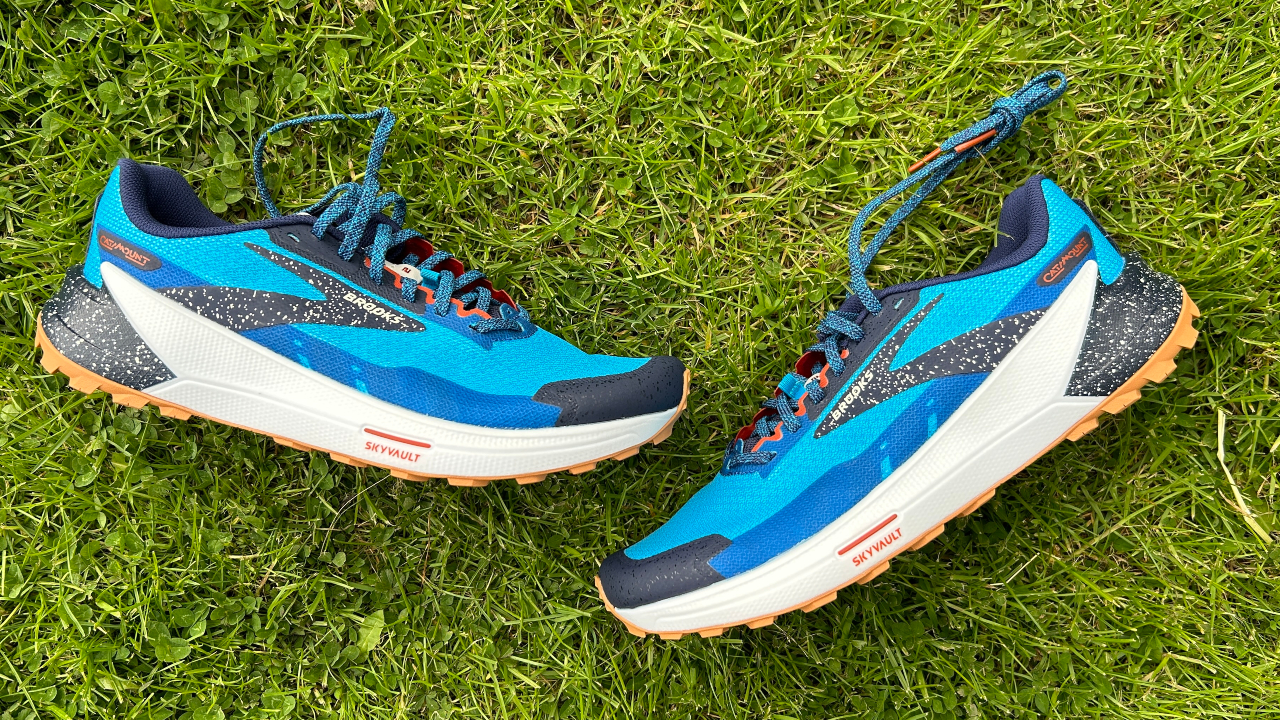
Specifications
Reasons to buy
Reasons to avoid
The Brooks Catamount 2 is a good-looking shoe, which is always a plus, and it backs up its smart design with impressive performance thanks largely to the DNA Flash midsole. This nitrogen-infused EVA foam is lightweight and responsive and makes the Catamount a top option for fast runs on firm ground.
You’ll have to stick to firm ground, though, because the small lugs on the outsole provide minimal grip on soft surfaces. The other disappointment I had was that the SkyVault plate in the forefoot didn’t deliver much in the way of propulsion on the run—it’s more of a rock plate for protection rather than a performance-booster. That doesn’t stop the Catamount 2 from being a great speed shoe for the trails, but it doesn’t deliver the same punch as a plated trail shoe like the Saucony Endorphin Edge.
Read more in my Brooks Catamount 2
Best Trail-Running Shoe For Cross-Country And Obstacle Course Racing
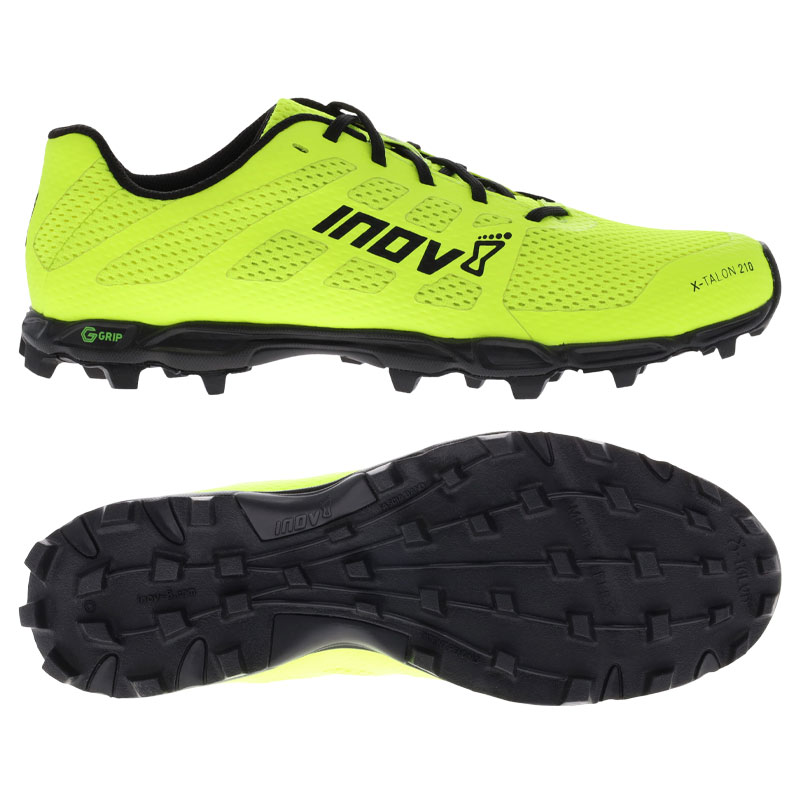
Inov-8 X-Talon G 210 V2
Specifications
Reasons to buy
Reasons to avoid
Some people will never be persuaded to use anything other than spikes for cross-country, but if there’s one shoe that I reckon could convince almost any runner to switch to studs, it’s the Talon G 210 V2. It’s very light and has 8mm lugs that provide superb grip in all conditions. I took on the notoriously boggy course on Hampstead Heath, north London, in the previous version of the shoe and didn’t slip once, despite the sometimes knee-high mud.
This second version has the same outsole as the original, with the huge studs made of a highly durable graphene material that does a decent job of finding grip on hard surfaces, so you won’t slip on the short paved sections that occasionally crop up in cross-country races. The upper has been changed to Inov-8’s Cordura mesh material, which drains well and should be more hardy than the upper on the original X-Talon 210, which I found did develop small holes during the long XC season.
How To Buy The Best Trail-Running Shoes For You
For all the info you need to help select the perfect trail shoes for you, we spoke to Simon Callaway of Saucony UK.
How do trail-running shoes differ from road shoes?
“The main differences are the traction on the sole—trail-running shoes have more and deeper lugs for a bigger surface area, which is designed to increase traction,” says Callaway. “The uppers tend to be knit meshes, so less debris can get into the shoe itself, and trail shoes generally have a lower offset—the heel height to the toe height is lower so the shoe is relatively flatter, giving a more stable platform to run on.
“In terms of cushioning they are generally about as cushioned as the road running shoes.”
What lug depth should you look for on a trail shoe?
One key measure of a trail shoe is the depth of the lugs on the sole, as that will determine which terrain it’s best suited to.
“At Saucony, a 3mm lug is designed for road-to-trail,” says Callaway. “It’s for the person who wants to run around the park but also has a bit of road running to do as well. The slightly shallower lug works on wet Tarmac as well as it does on light trail.”
“Then we’ve got the 5mm tread, designed for traditional trail running. Then 7mm lugs, almost like a studded lug, are designed for really muddy conditions. It’s not the best shoe for road-to-trail but if you go directly to the trail to run—with a change of shoes for the drive there and back—that depth is useful.”
What type of lug should you go for if you’re a fell runner who is constantly tackling steep gradients?
“Generally fell runners will be in deep-lug shoes,” says Callaway. “If you’re running downhill flat out, you want to make sure the heel is gripping as soon as it lands. Similarly on uphills, when you’re at steeper angle you get water run-off and patches where it’s particularly muddy.”
What is a rock plate and why do many trail shoes have one?
“A rock plate or rock counter is basically a flexible piece of plastic that sits across the forefoot where you’re pushing off from,” says Callaway.
“If you’re on rocky ground then stones can push up into the foot. That, repeated over several hundreds or thousands of steps, can cause irritation to the foot. It’s a little bit of extra protection where the shoe absorbs more of the impact and disperses it over a greater area.”
Why are trail shoes generally not waterproof?
If you’re heading for the hills for a hike, the first feature you might look for in walking boots is waterproofing, but most trail shoes are at most water-resistant.
“There is waterproofing available but the issue is that to make the shoe waterproof you have to wrap the upper under the whole of the midsole and then glue it down to create a complete seal,” says Callaway.
“This makes the shoe heavier and less flexible. It’s a trade-off. A lot of brands refer to their uppers as water-resistant, which means the material is probably waterproof but they haven’t wrapped it right underneath the foot and glued it to the sole. So it can only be called water-resistant as opposed to waterproof.
“Also waterproofing means a shoe is not particularly breathable so your foot gets very hot and sweaty. It’s a comfort thing. People will accept if they’re running off-road they're going to get wet feet, in which case what’s really important is making sure you have good-quality running sock that you can get wet and sweaty in and not blister.”
Is it OK to run on the road in trail-running shoes?
Some trail-running shoes are designed to handle road running too. These are generally called road-to-trail or all-terrain shoes, and will have outsoles with flatter, smoother lugs that grip well on asphalt. They may also use tougher rubber on the outsole than pure trail shoes to avoid it wearing down during prolonged stretches of running on roads.
Dedicated off-road shoes are usually fine for short spells of running on the road, but there are things to be aware of when using trail shoes on asphalt. One is grip; if you’re using a soft ground trail shoe with long lugs, it might be a bit skittery on hard roads, especially if the surface is wet or icy. Another issue is durability: trail outsoles designed to grip on softer off-road surfaces may get worn down quickly if you run on the road a lot.
Get the Coach Newsletter
Sign up for workout ideas, training advice, reviews of the latest gear and more.

Nick Harris-Fry is a journalist who has been covering health and fitness since 2015. Nick is an avid runner, covering 70-110km a week, which gives him ample opportunity to test a wide range of running shoes and running gear. He is also the chief tester for fitness trackers and running watches, treadmills and exercise bikes, and workout headphones.
